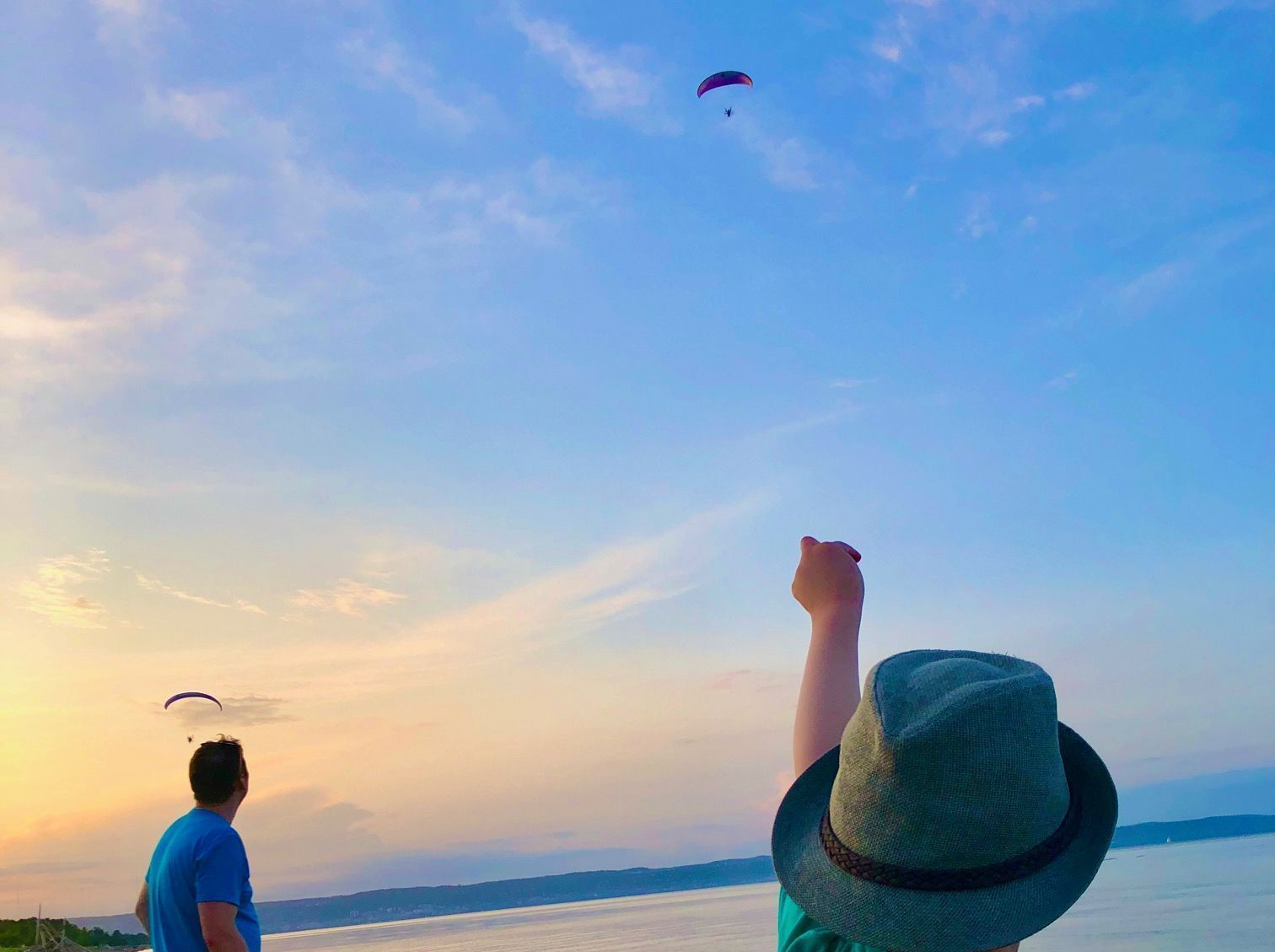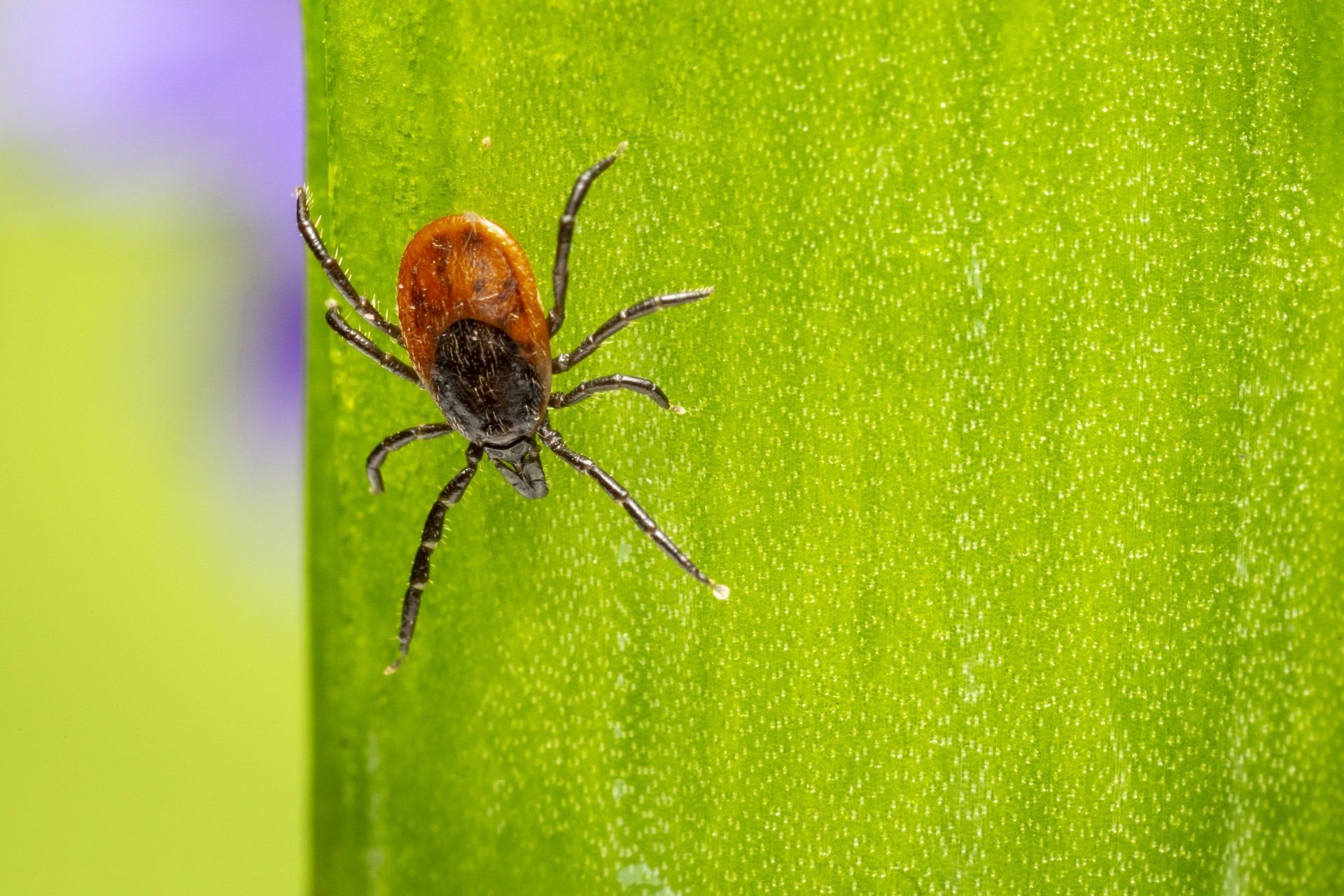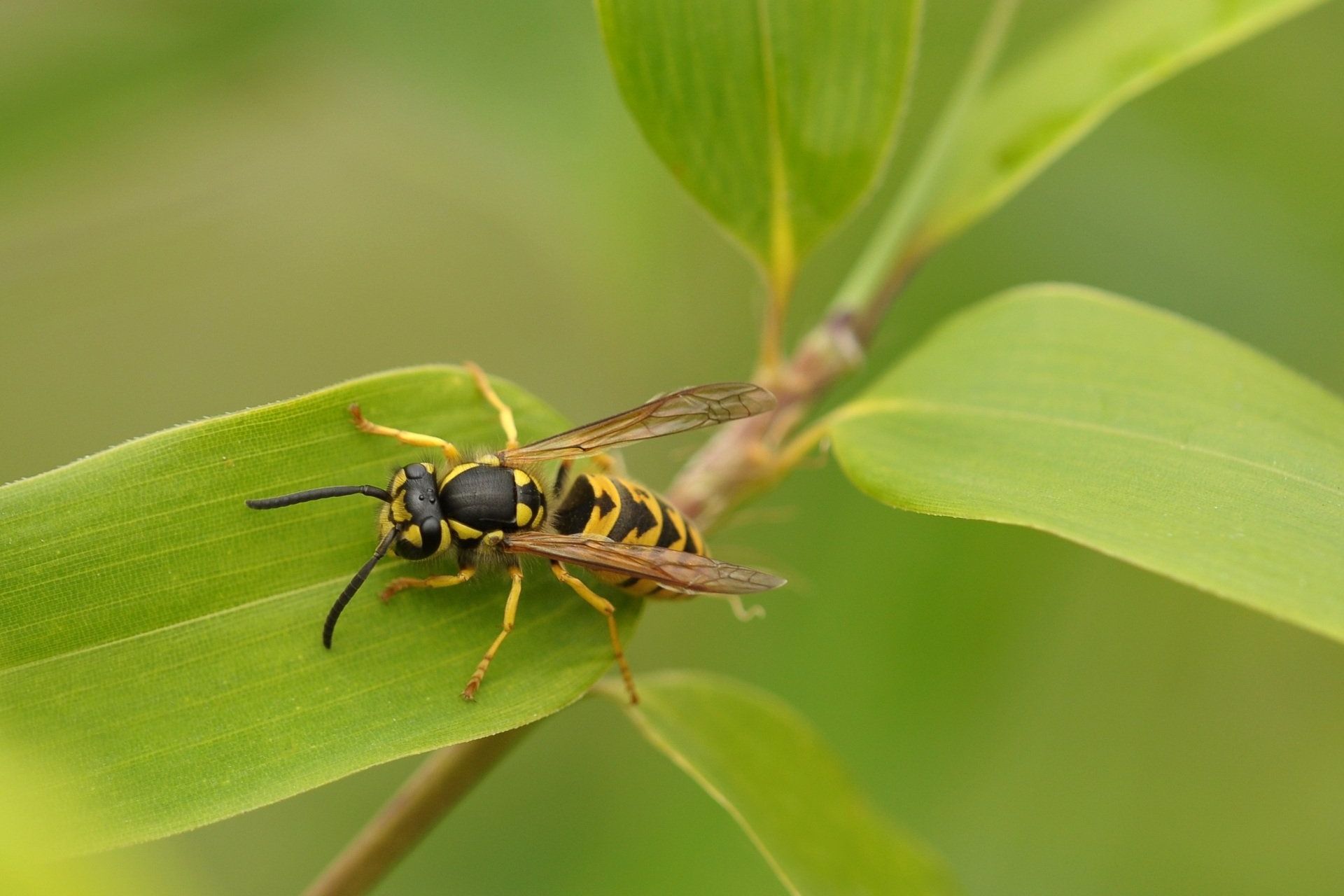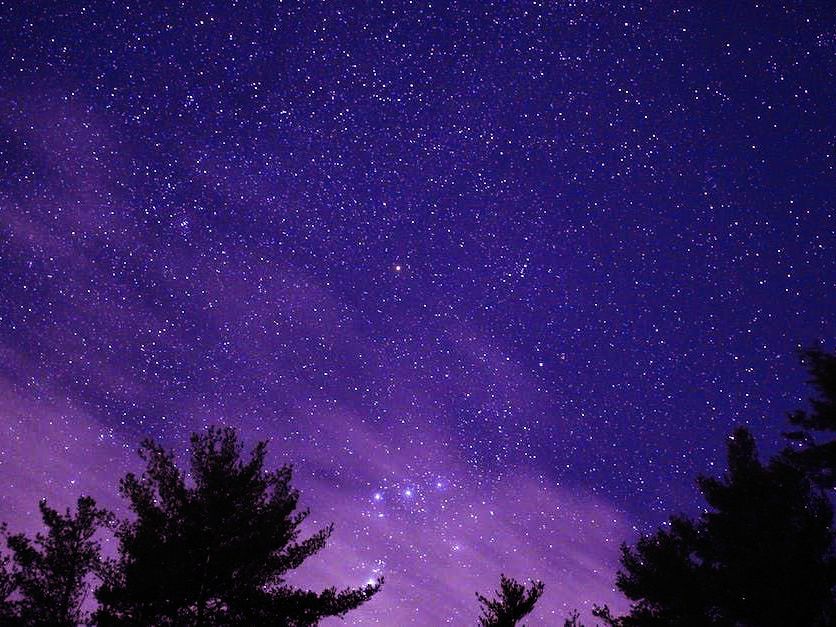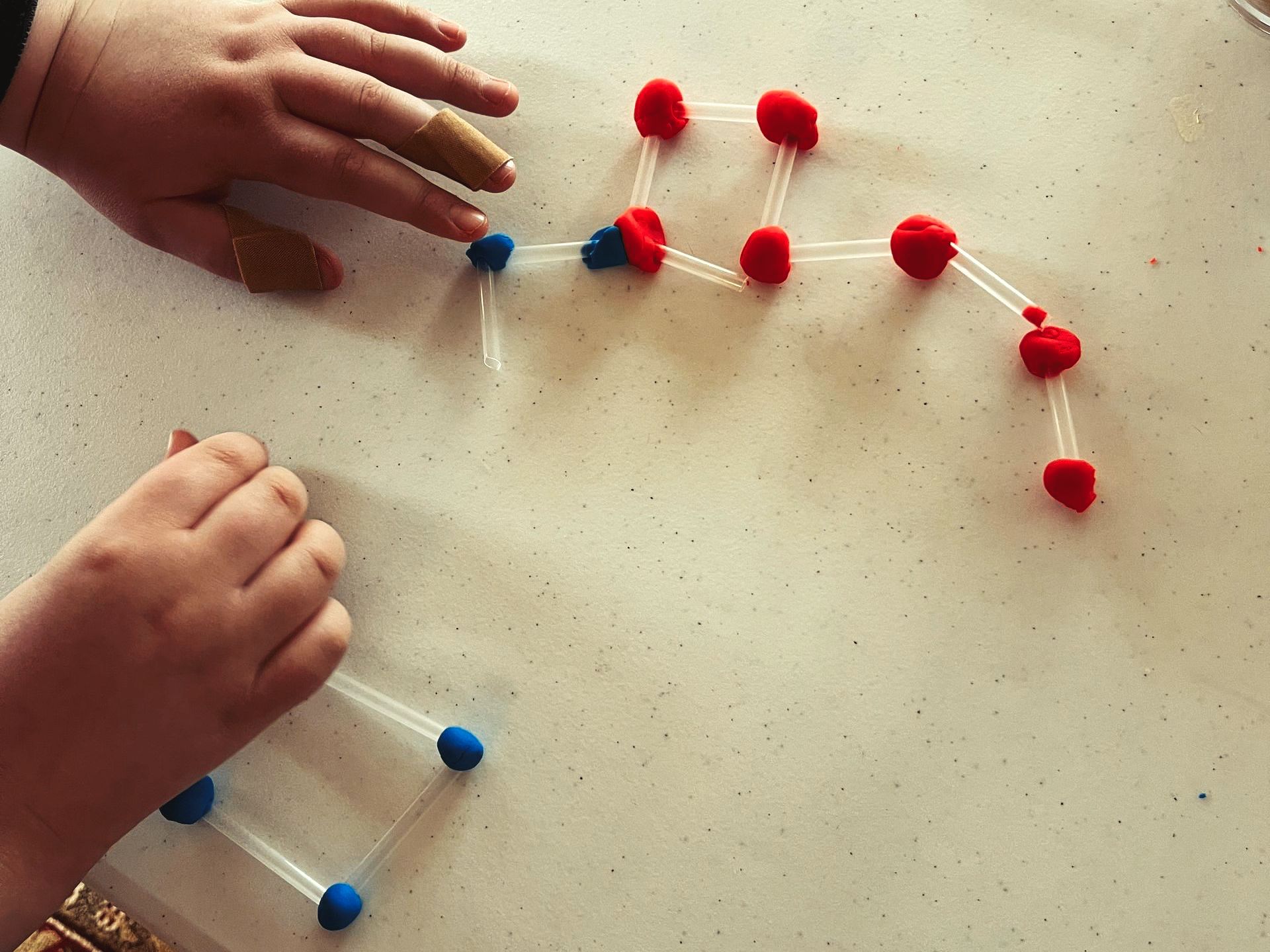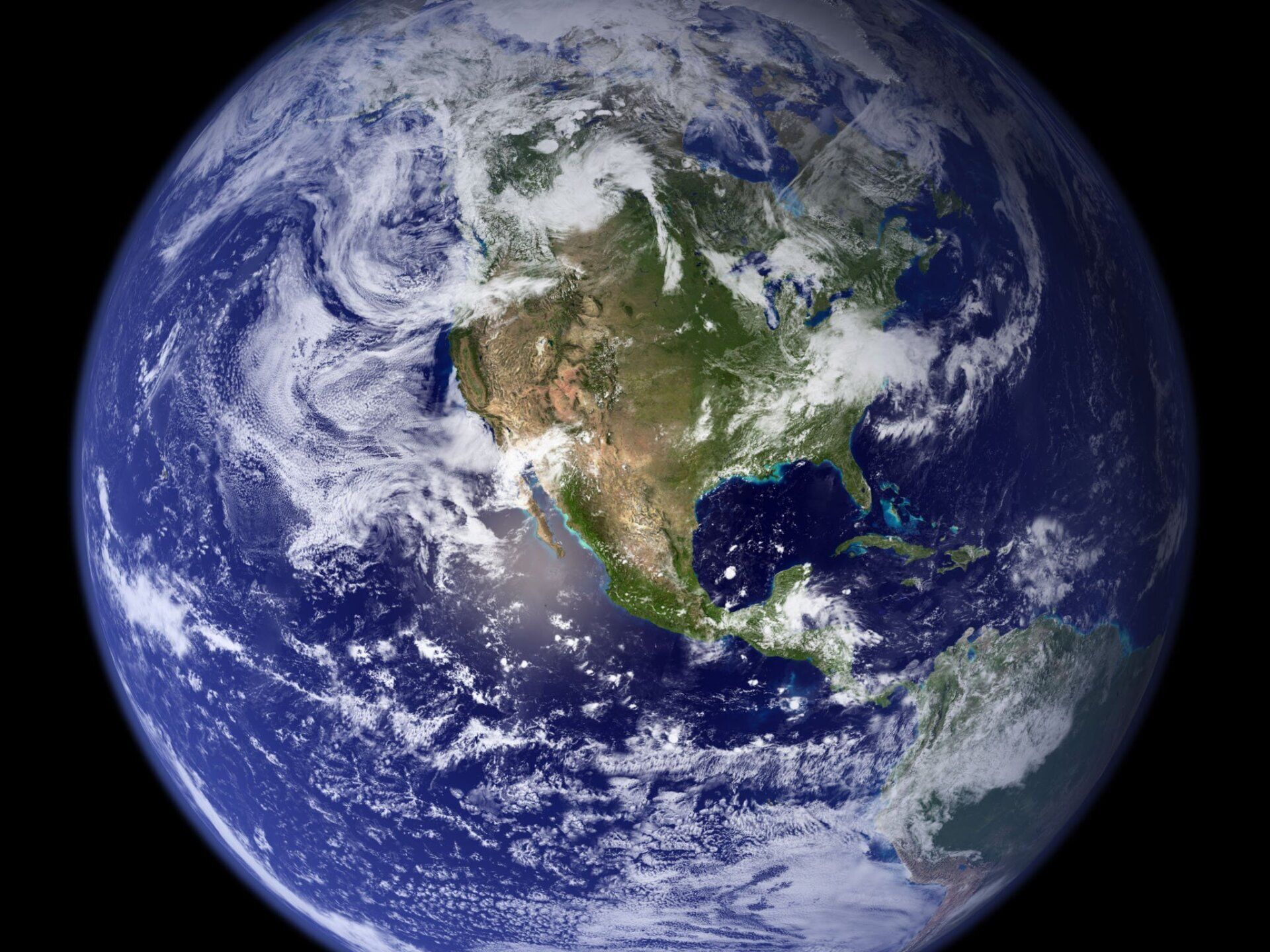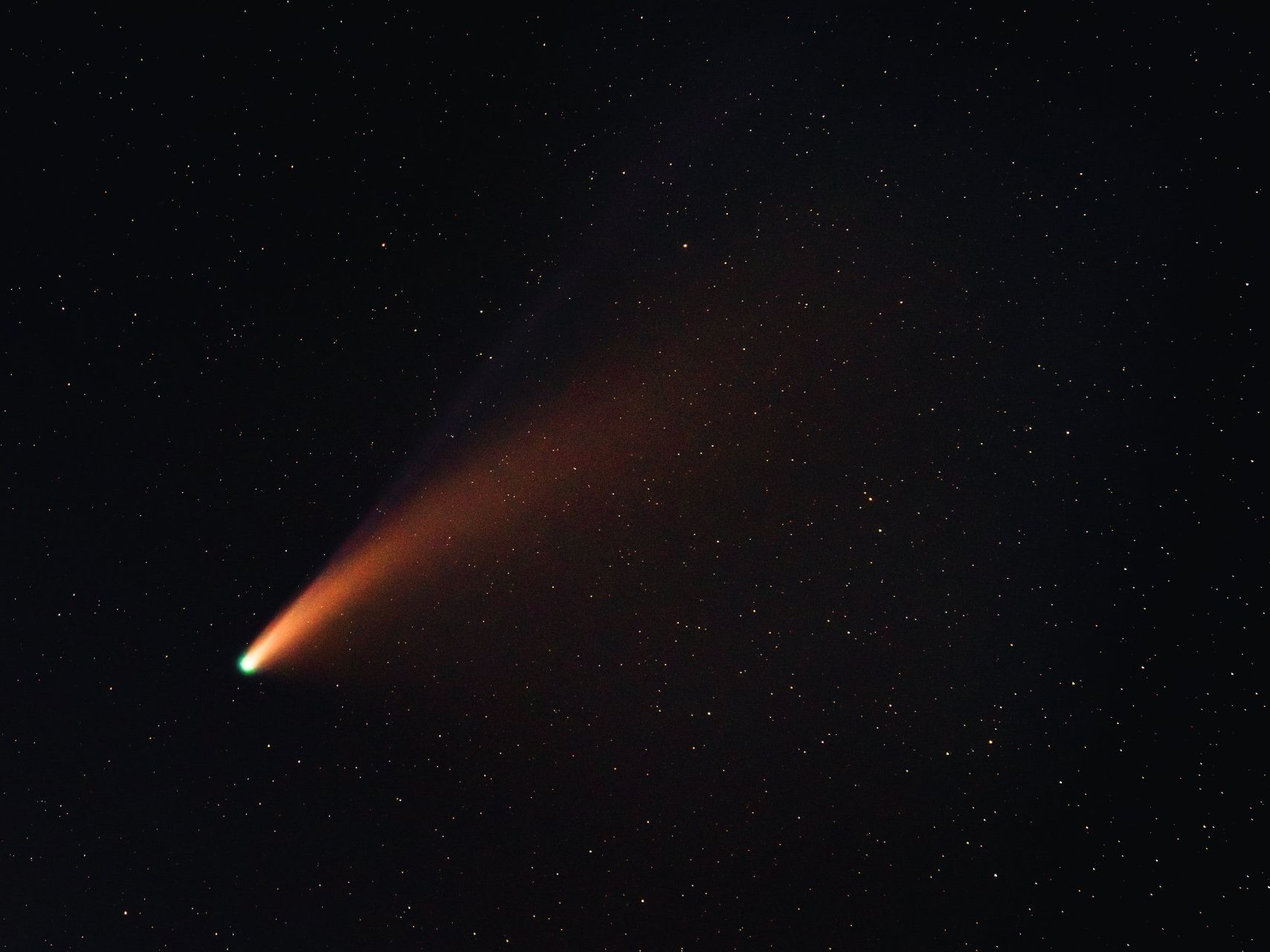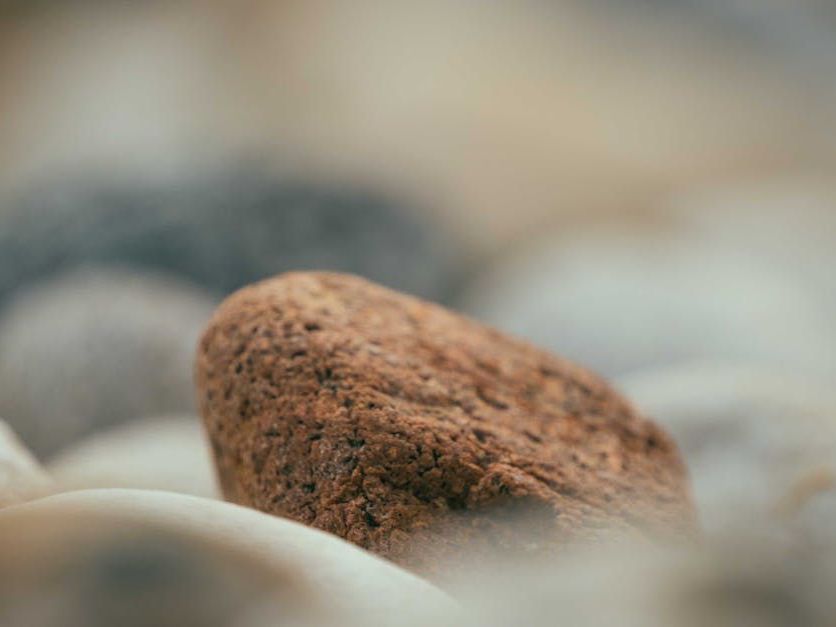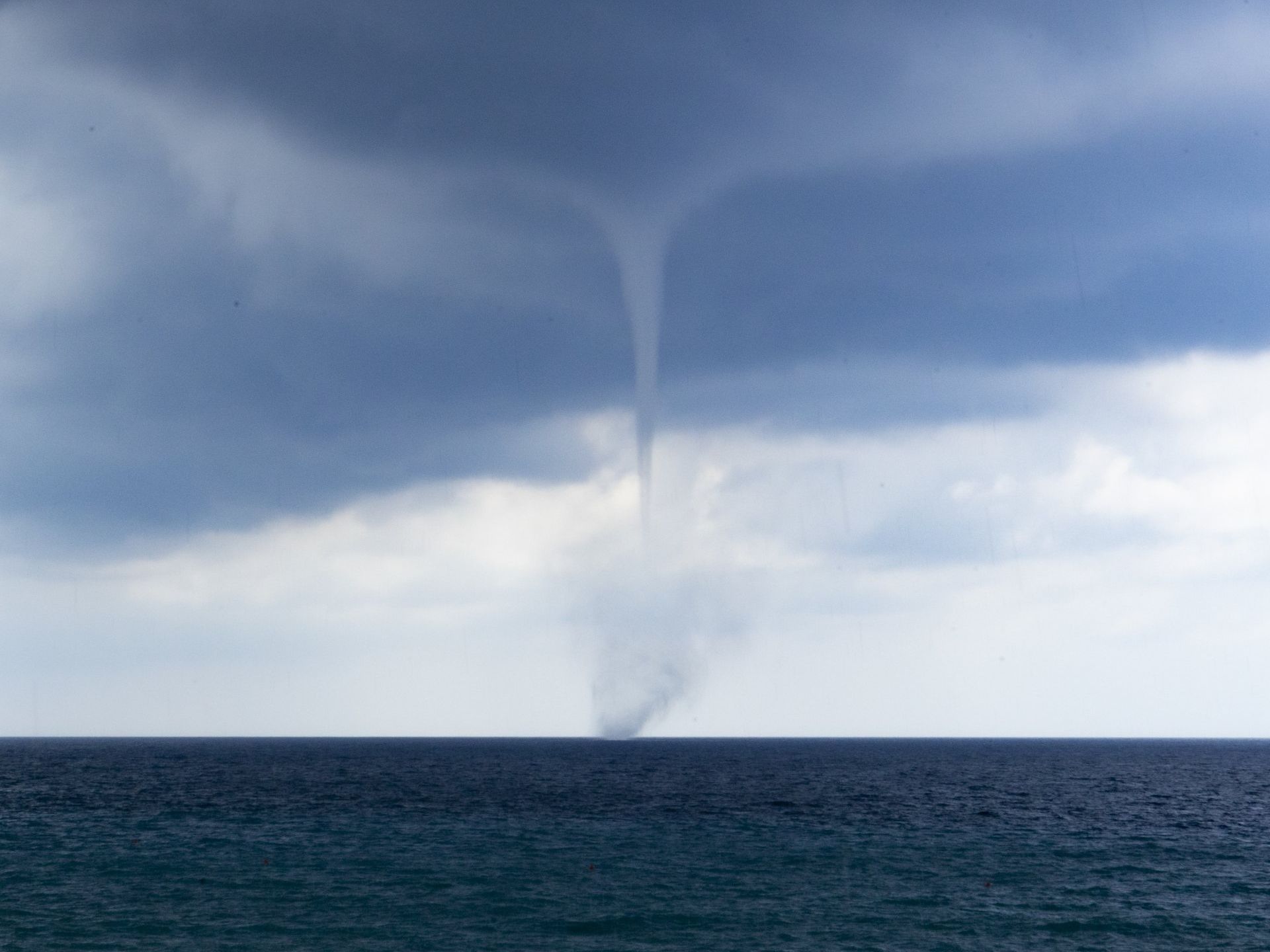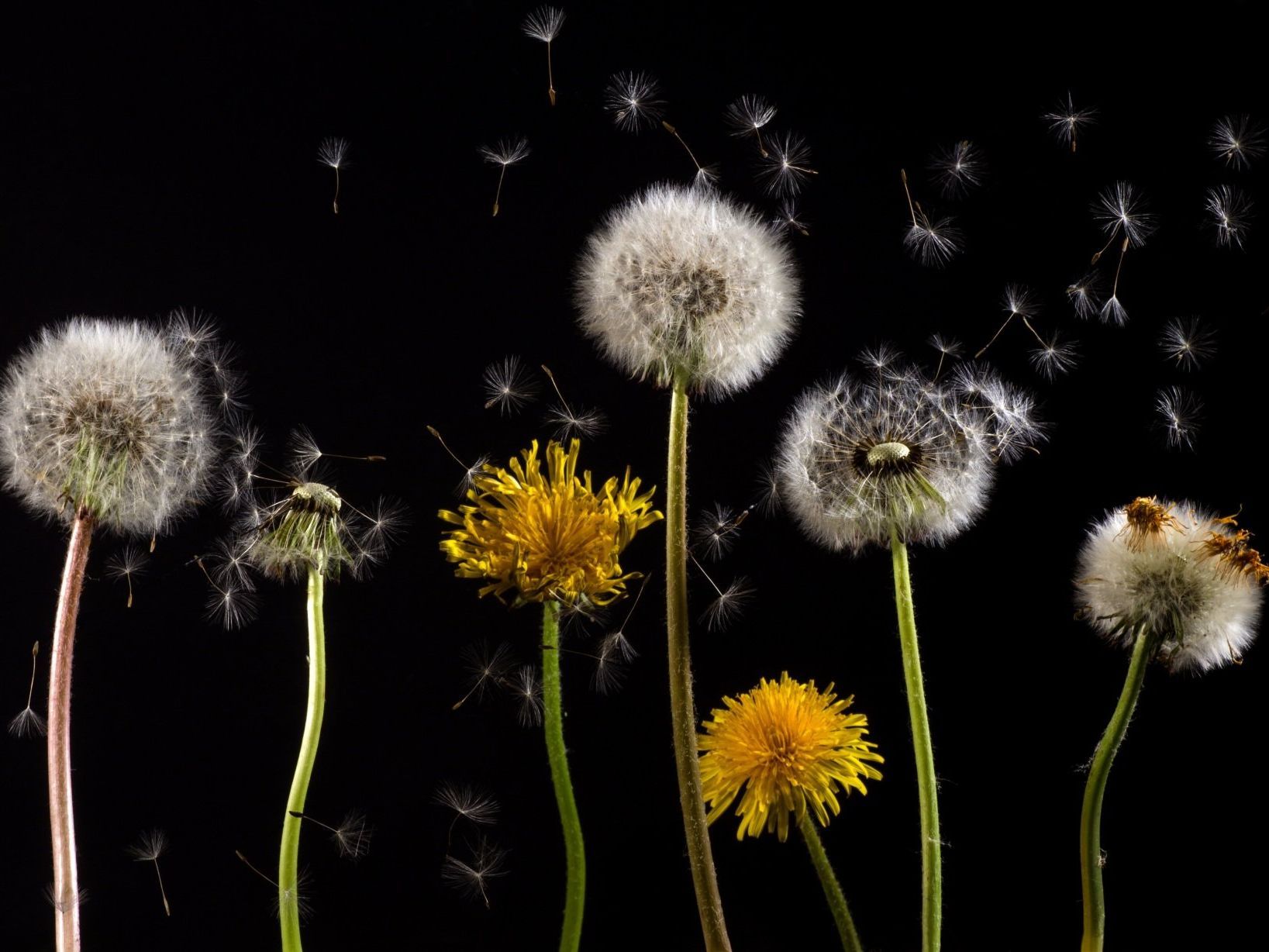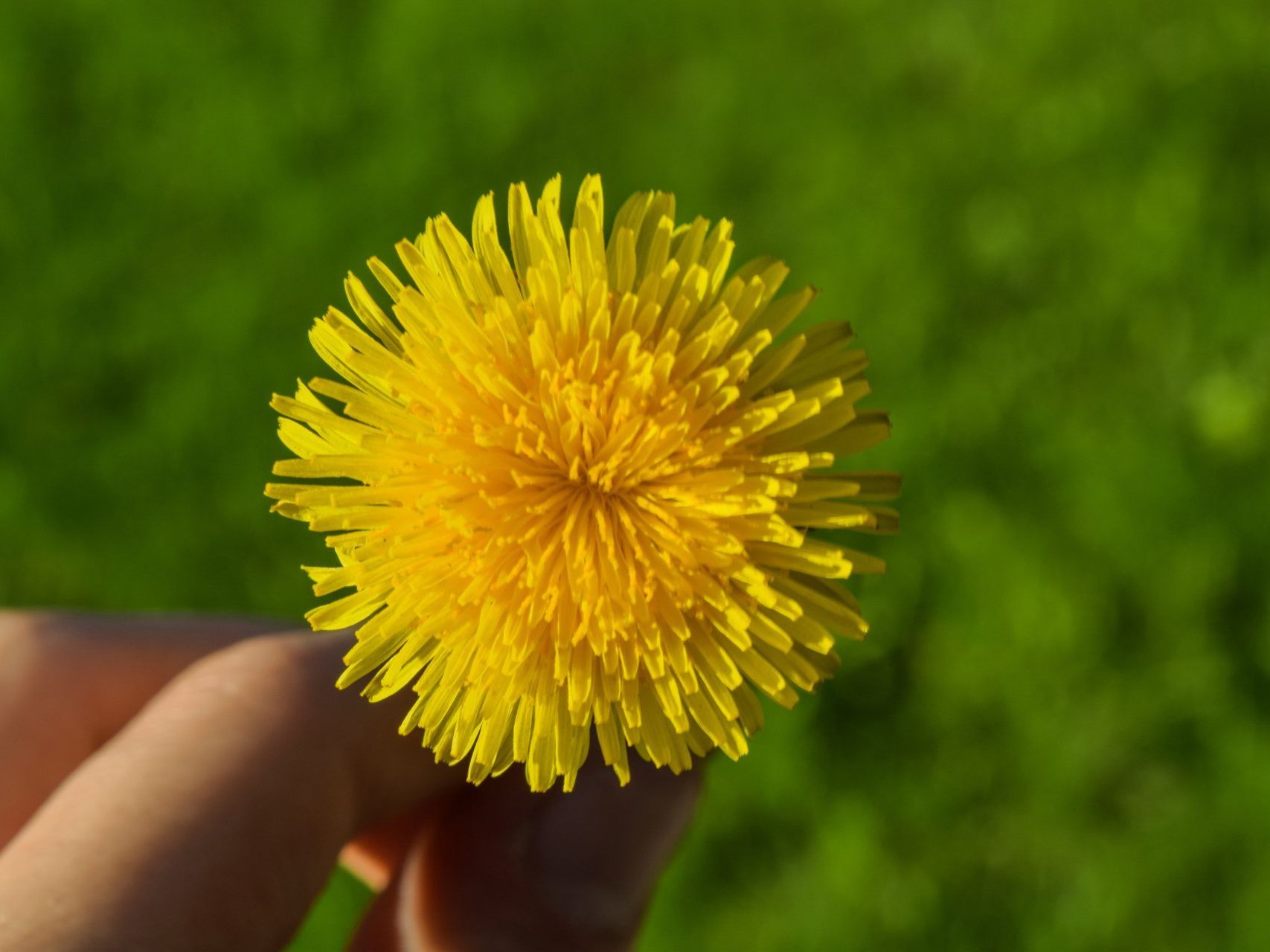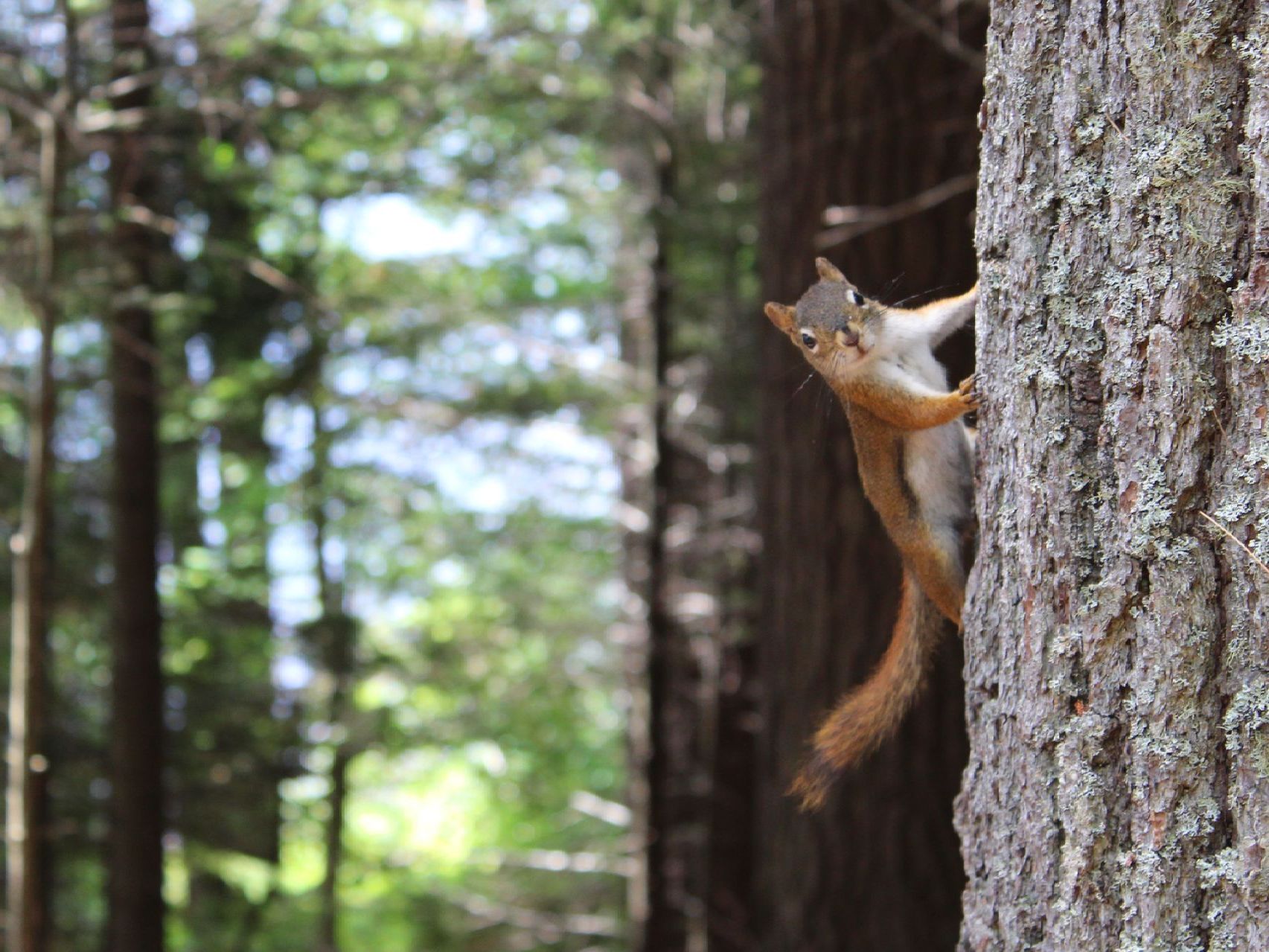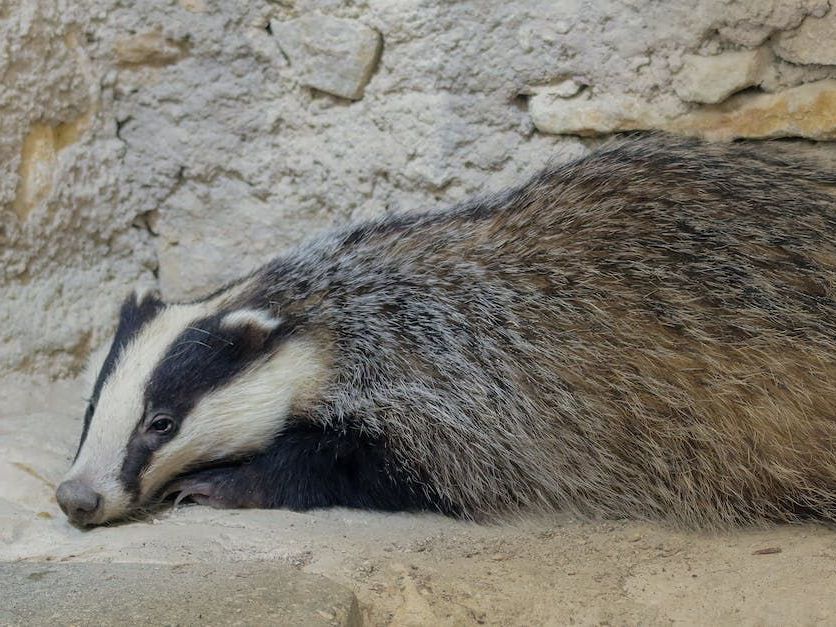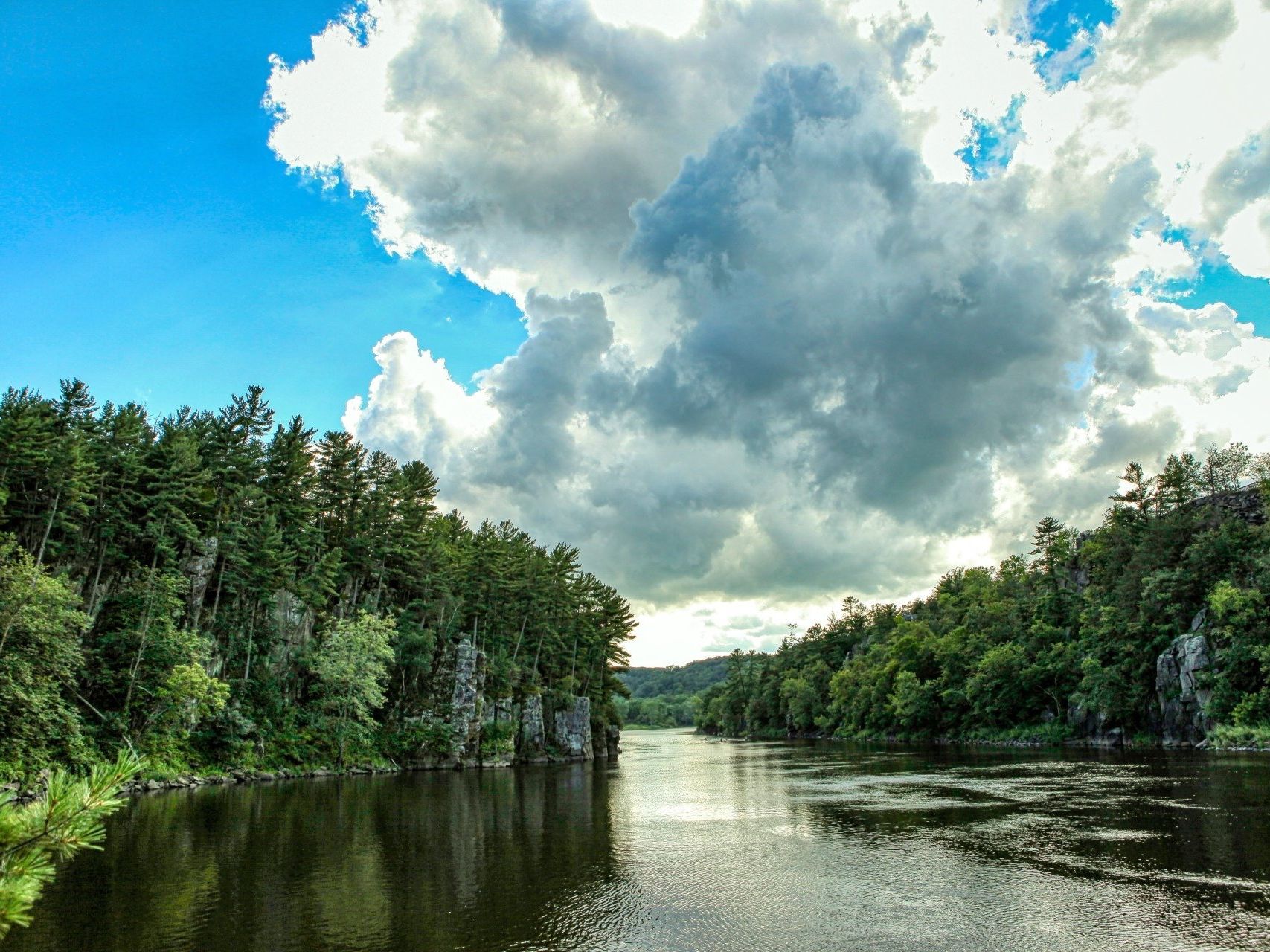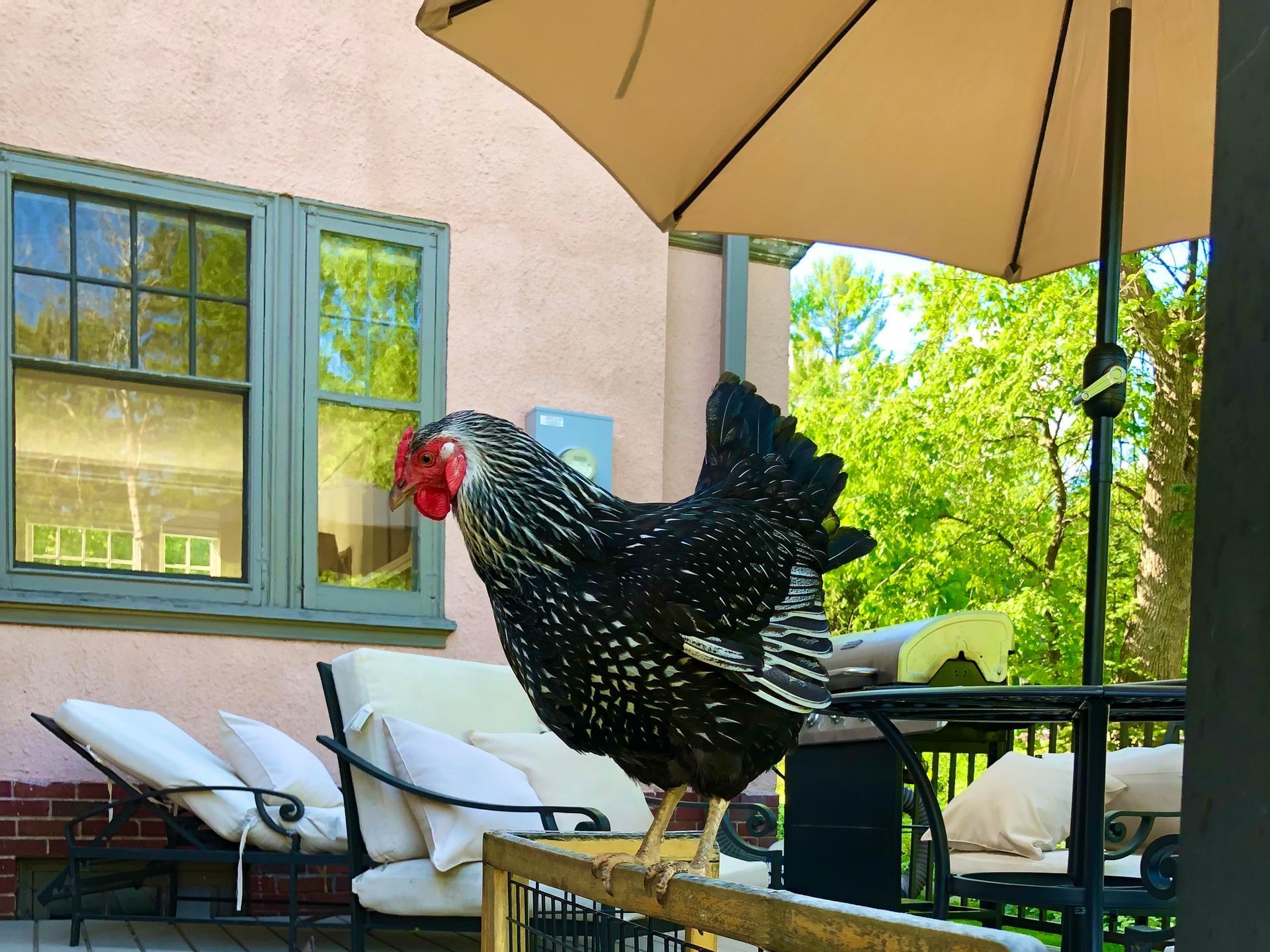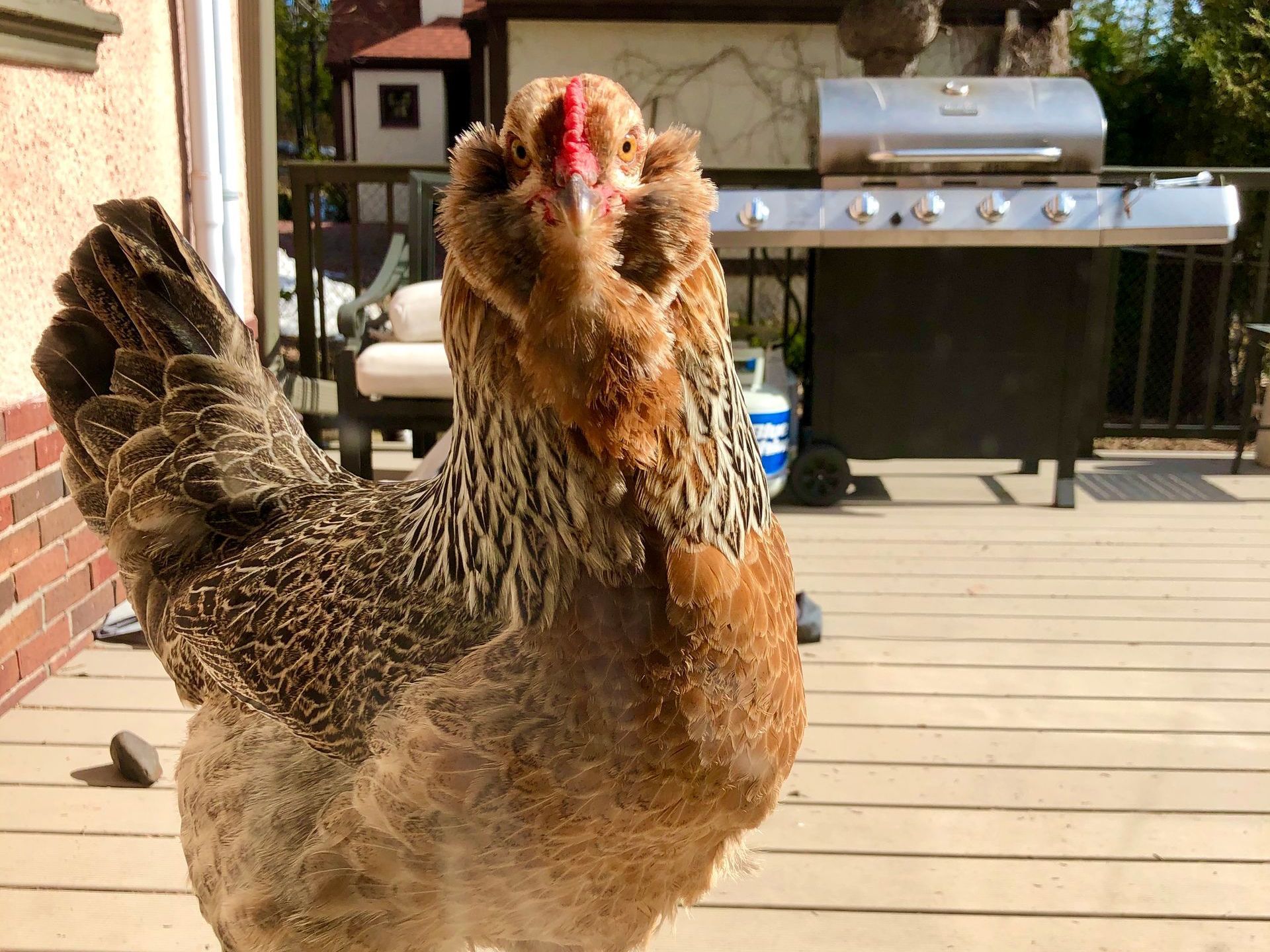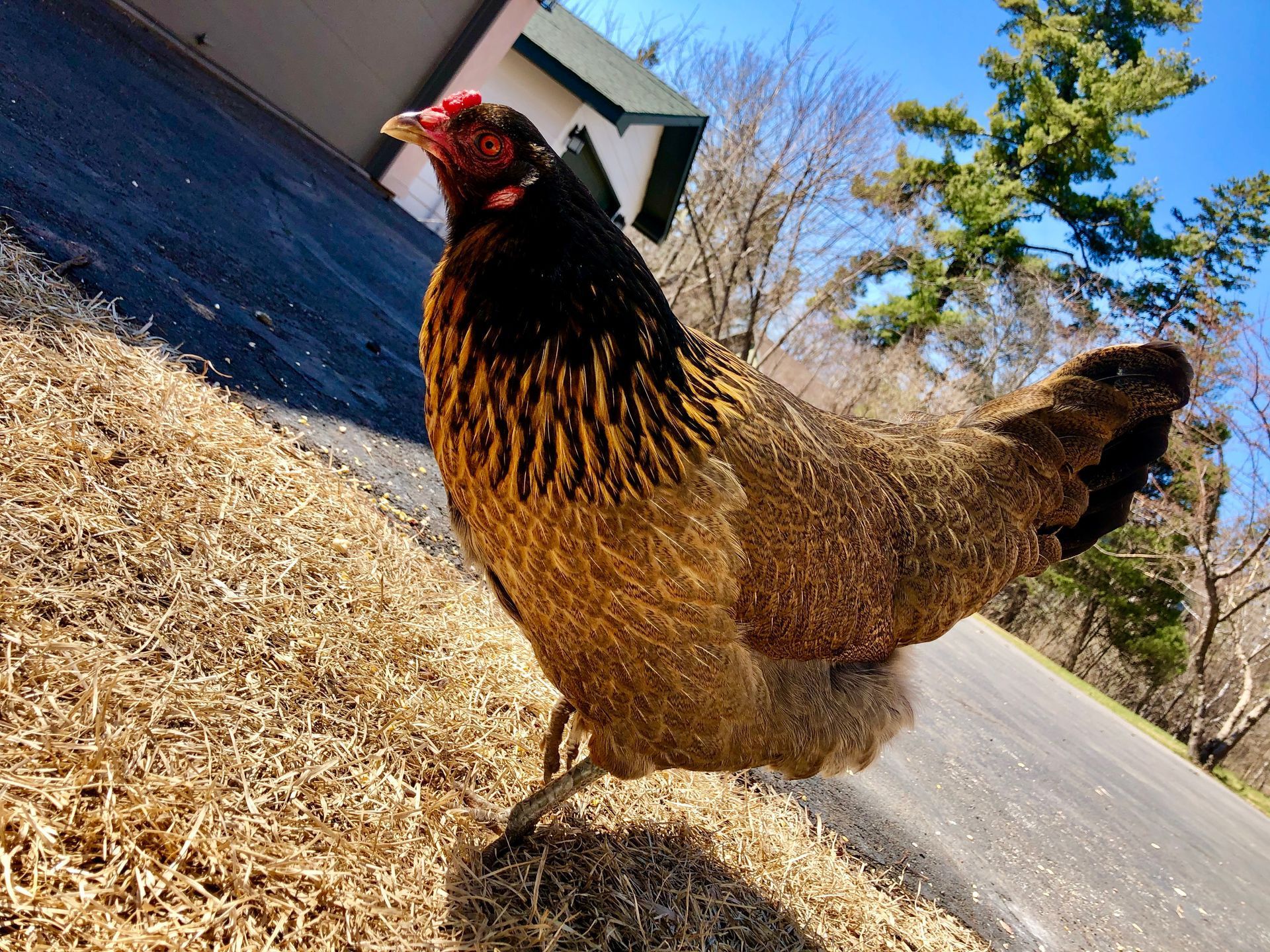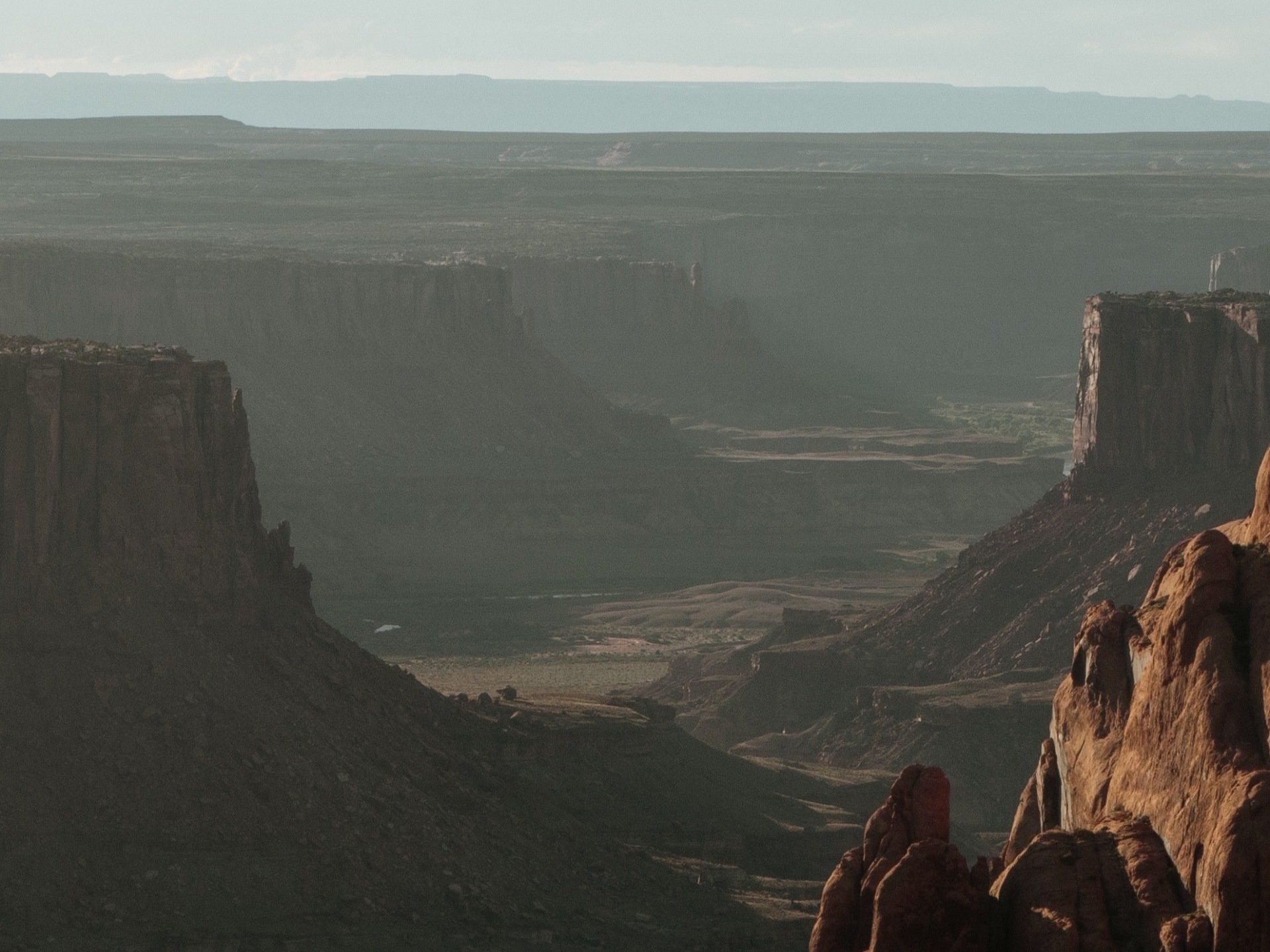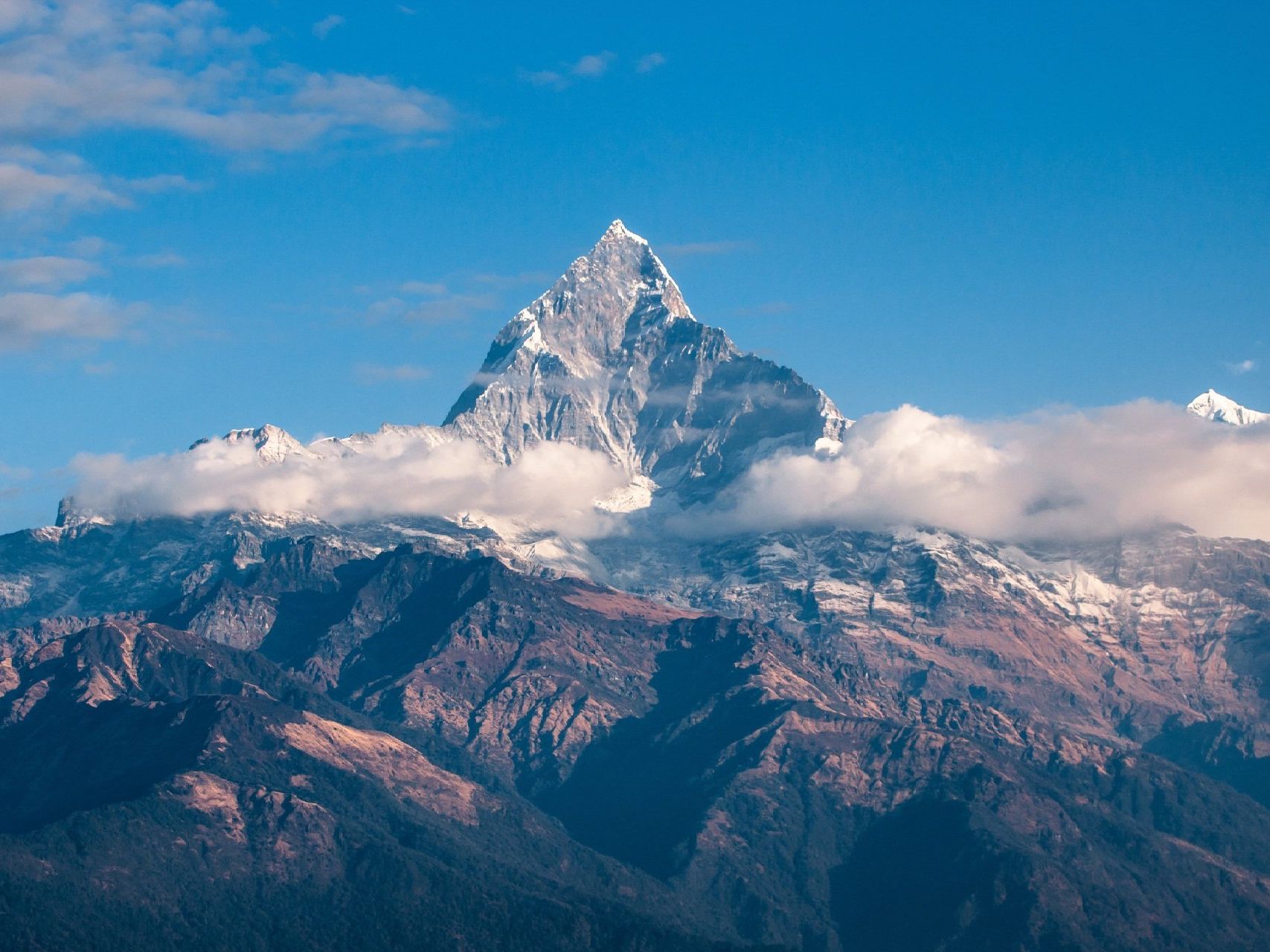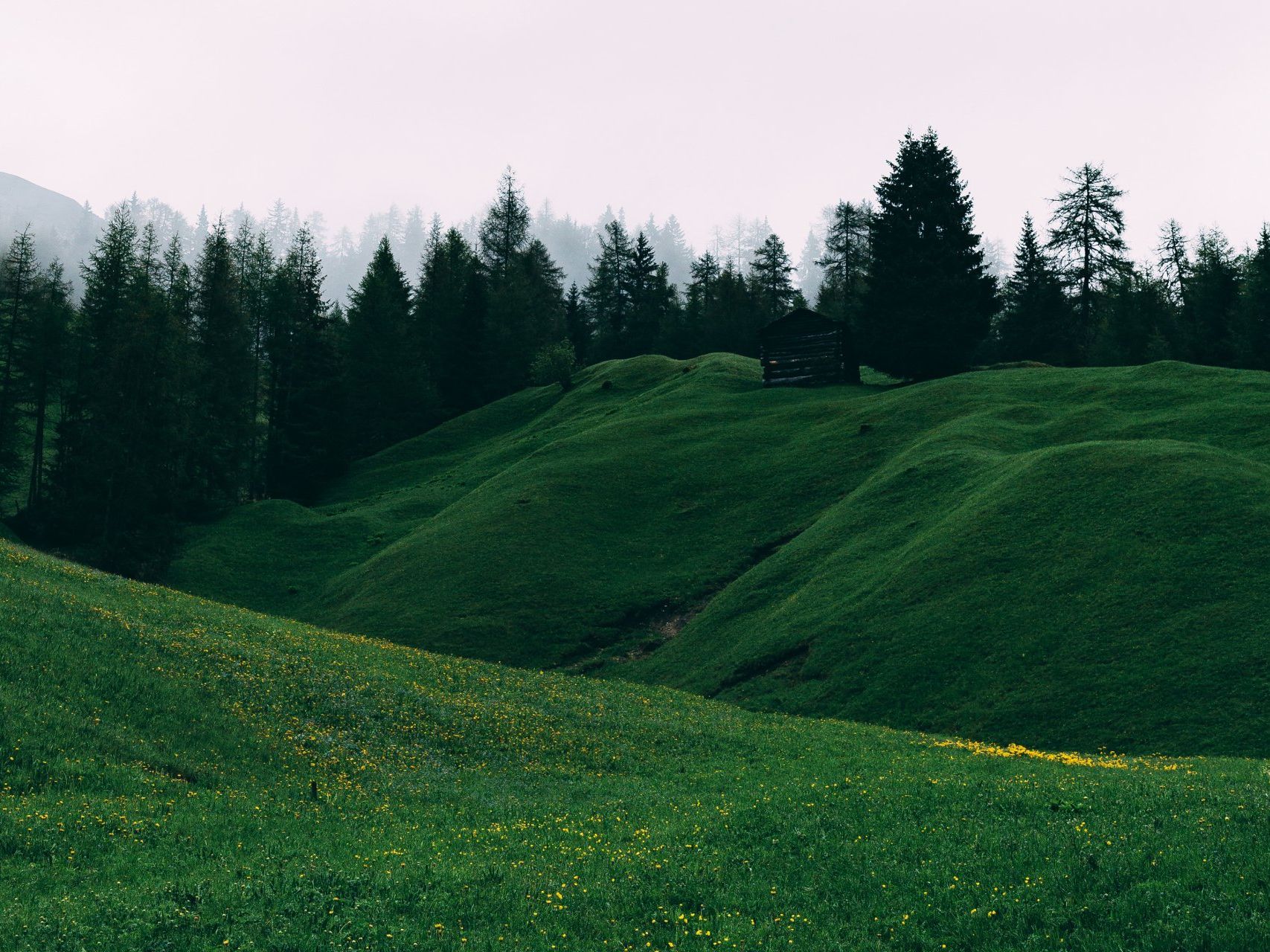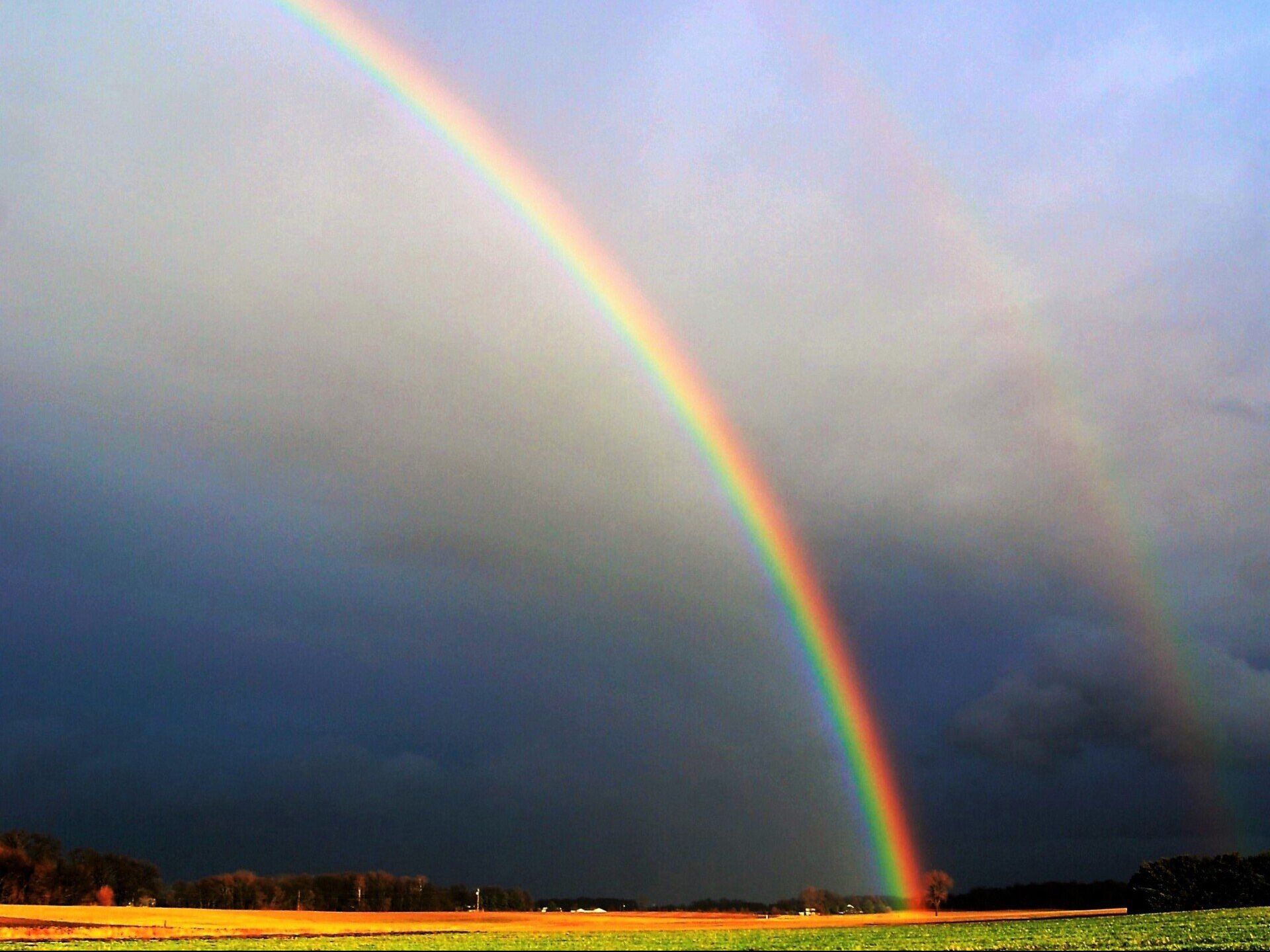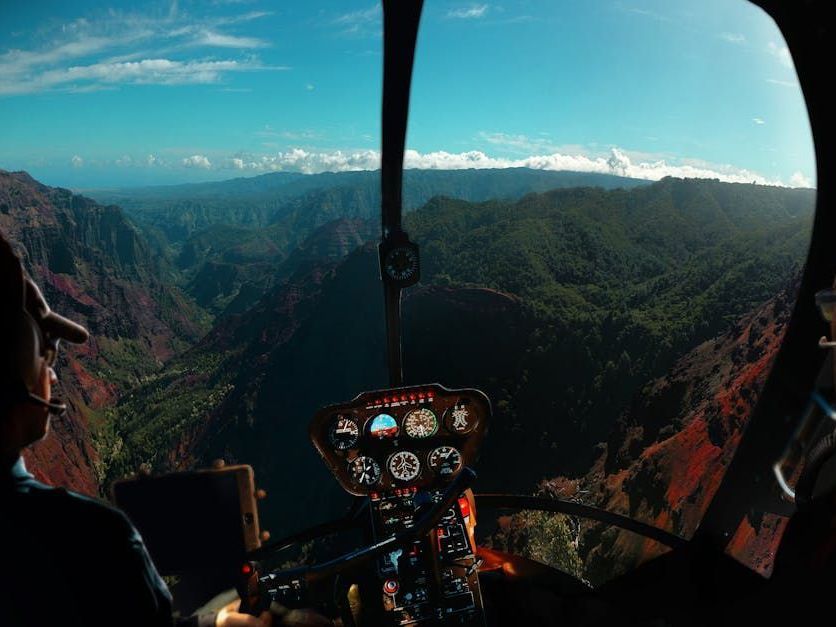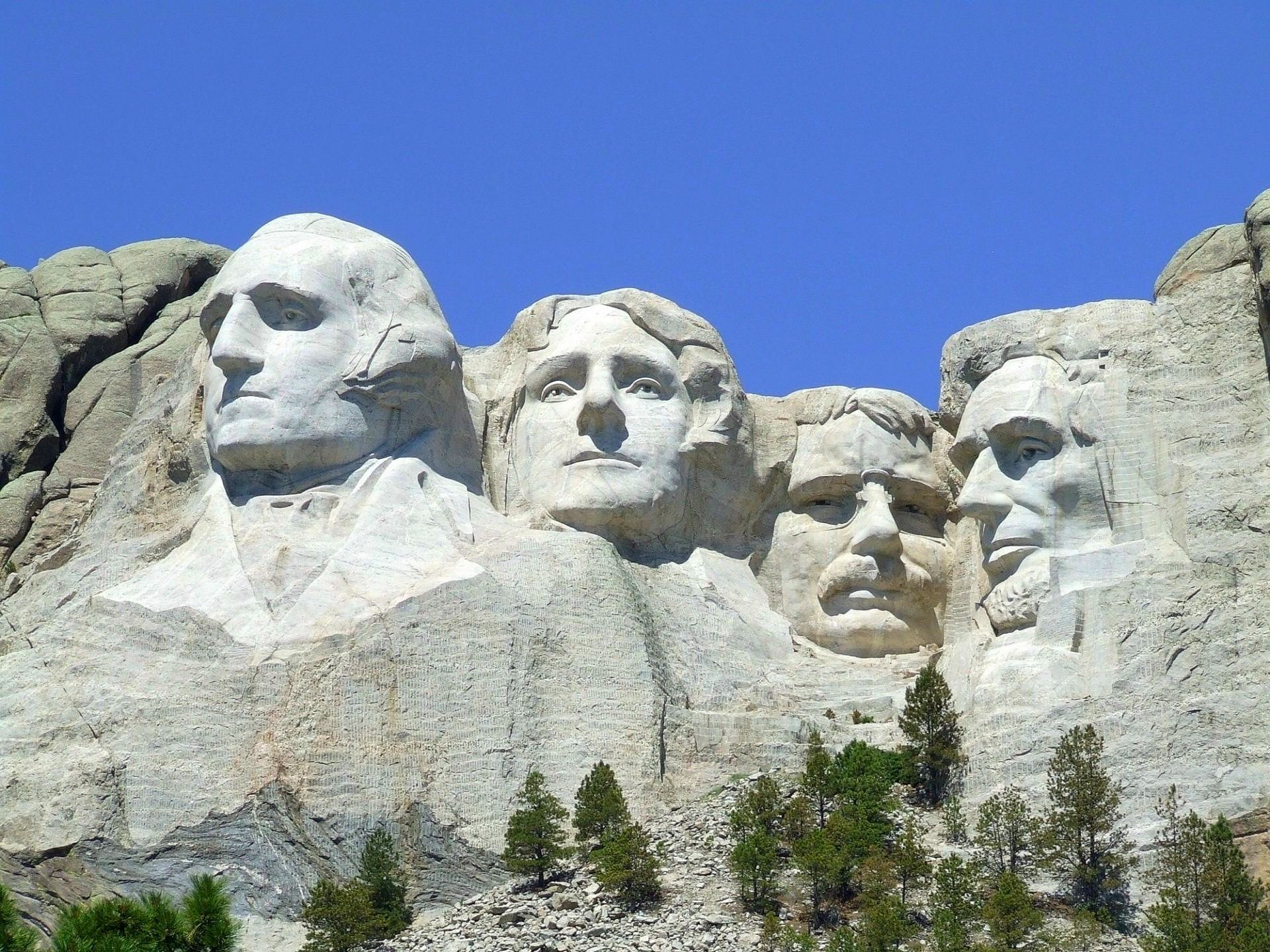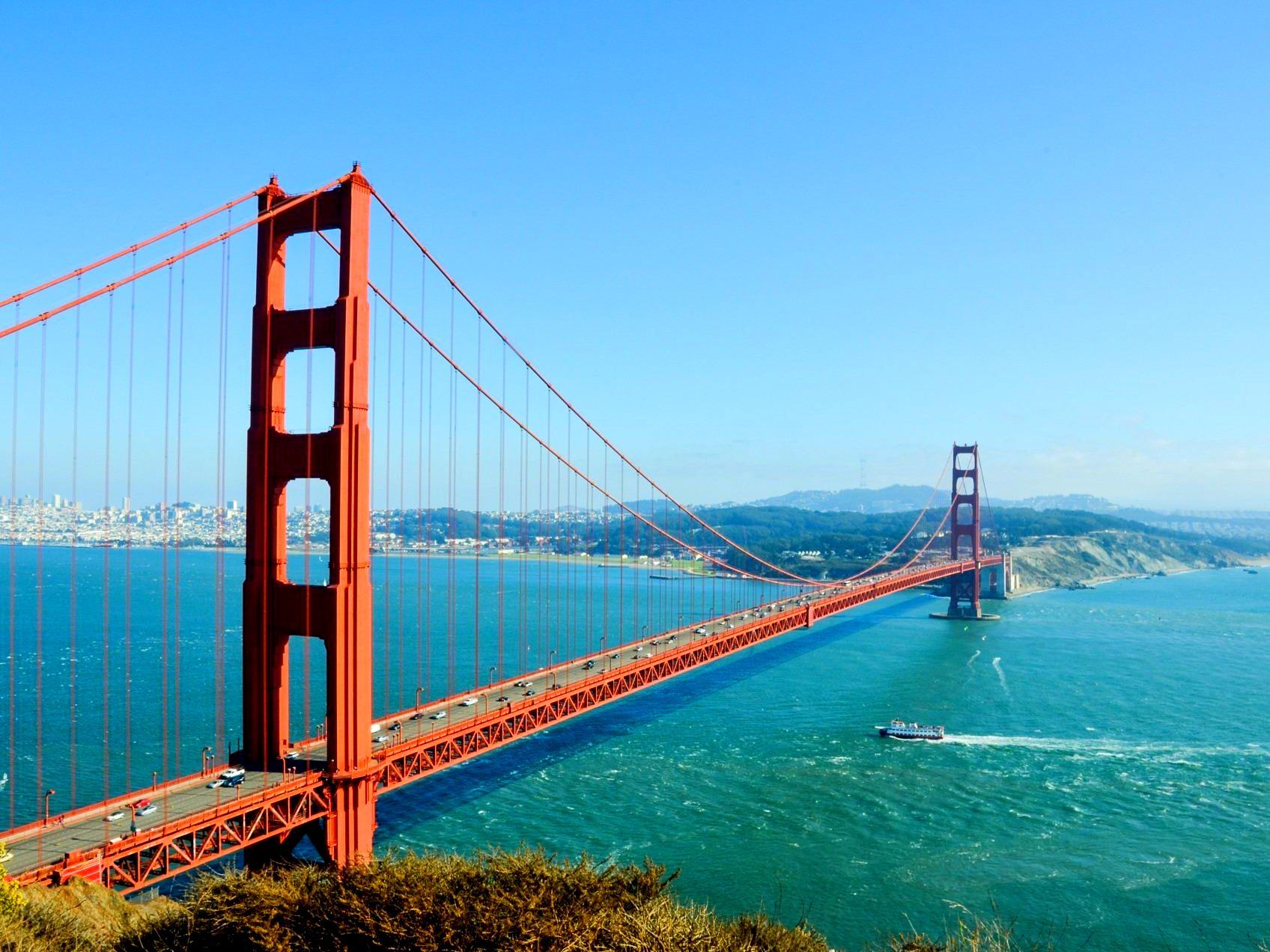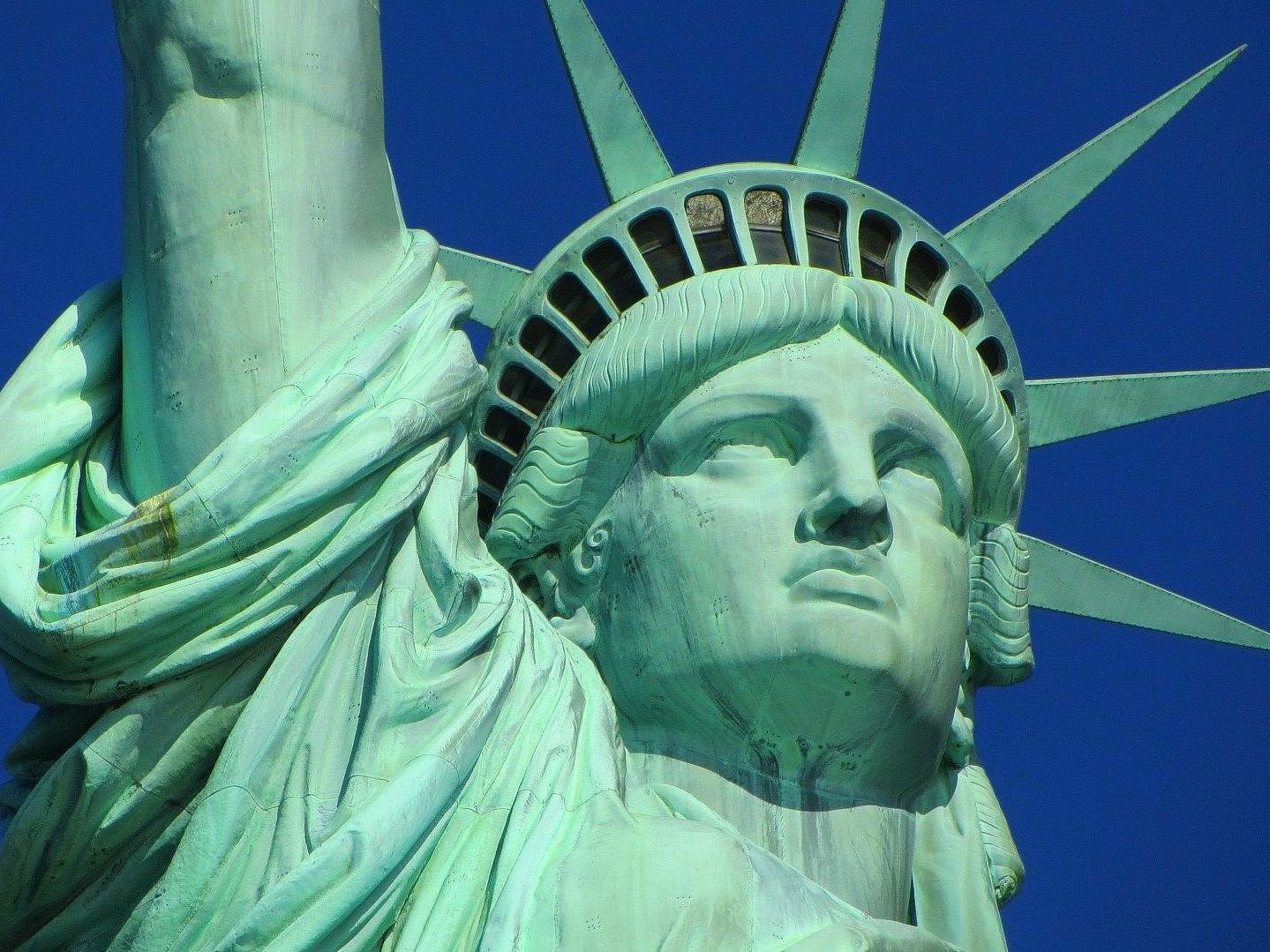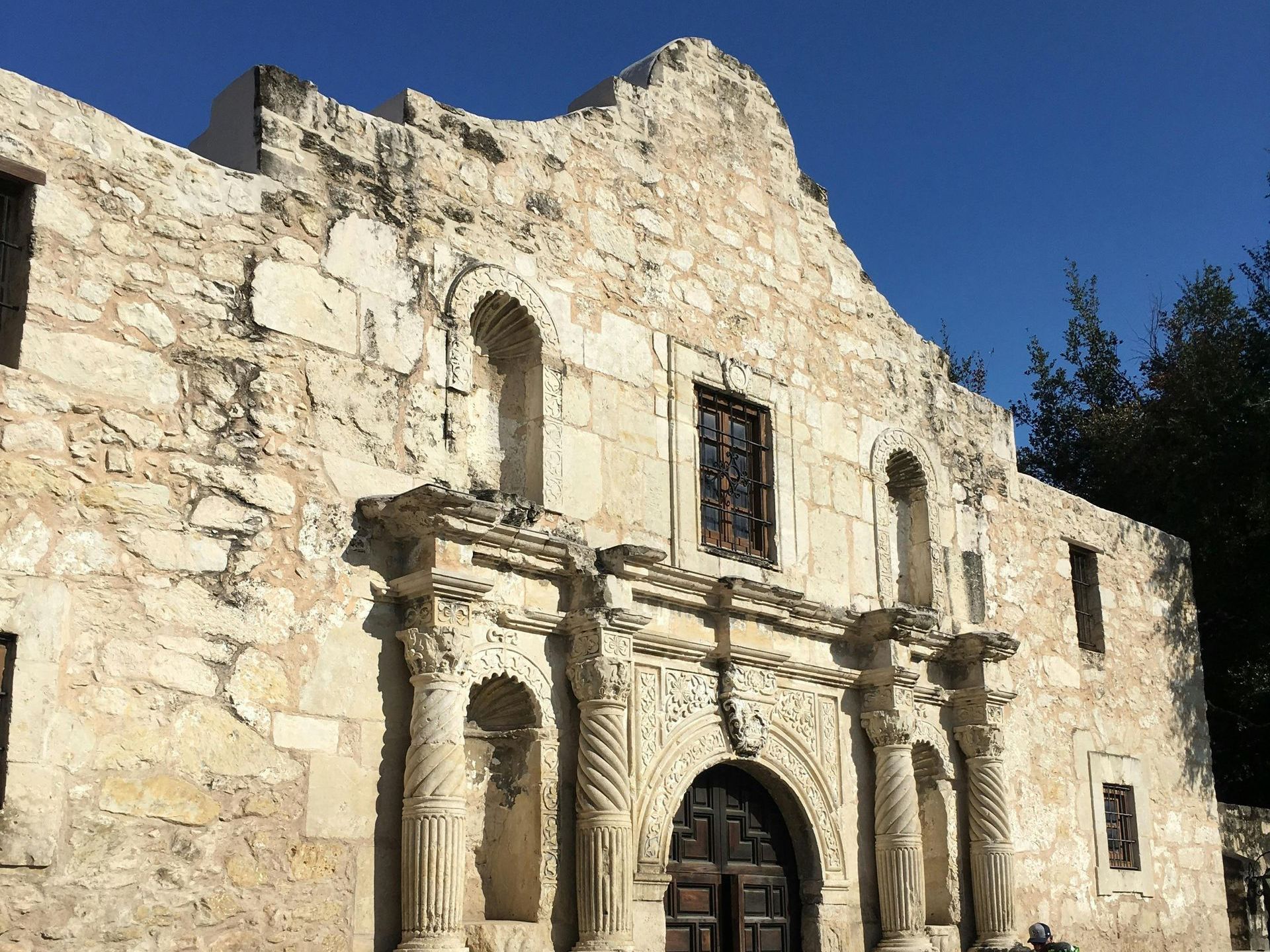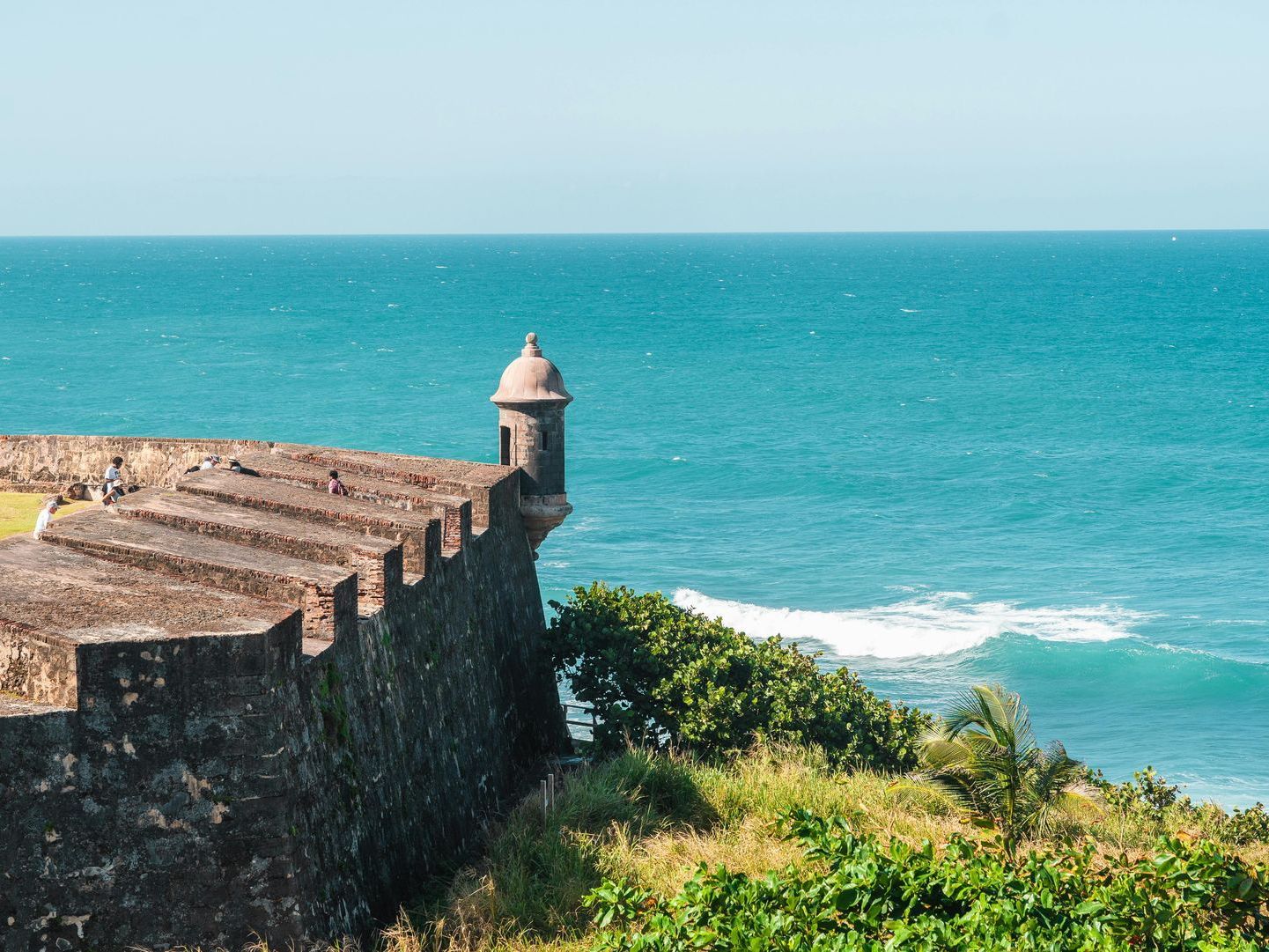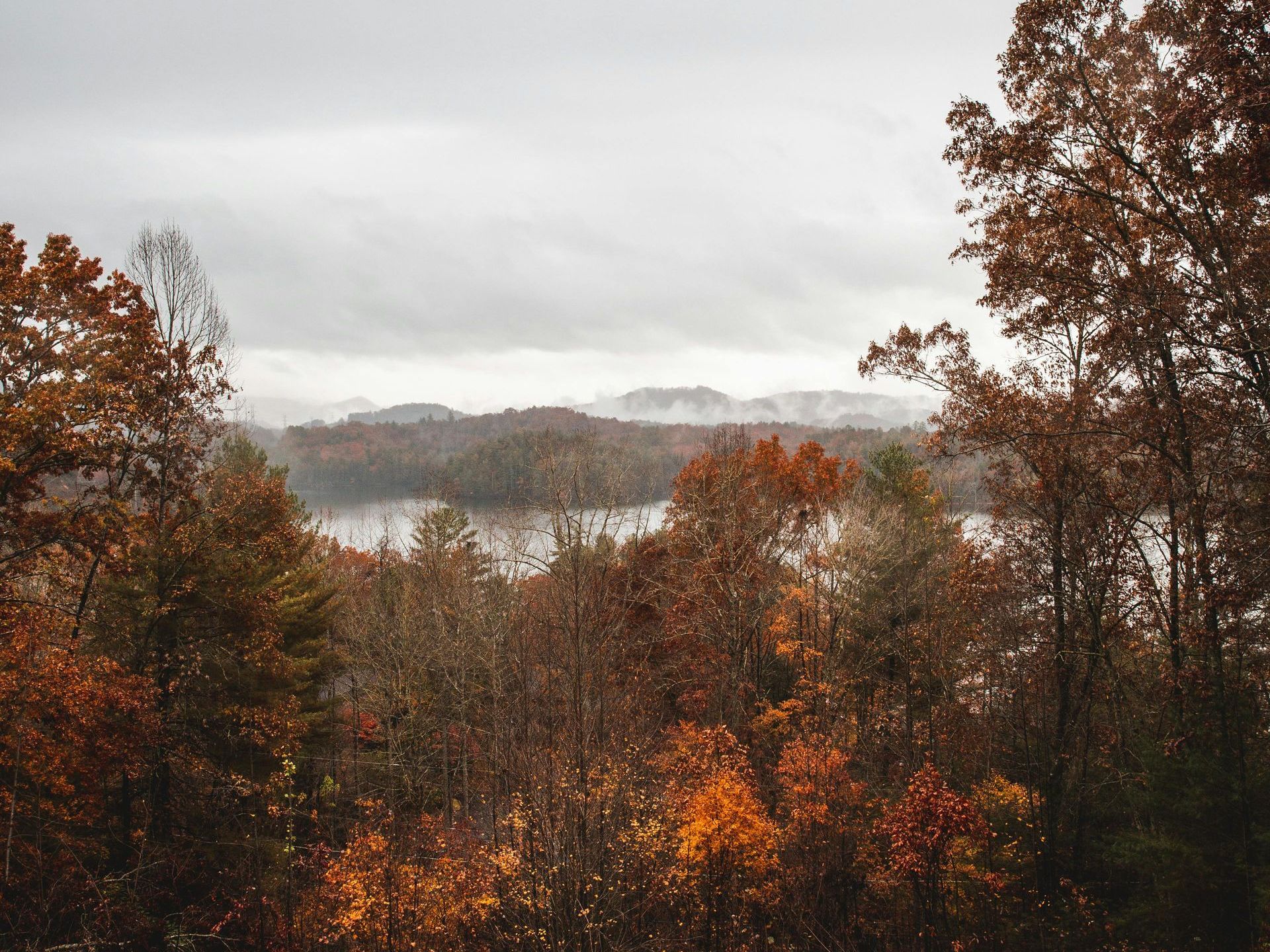the unsung hero of the forest floor

☁️ Supplemental Lessons ✨
Science
Cumulus
One of the three main types of clouds.
Cloud spotting? Yes, please! ☁️✨
These are the quintessential clouds of our childhood drawings; they have flat bases and puffy, cottonball-like tops. 🎨☁️ They're the fluffy, friendly kind that signals good weather, making us dream of lazy summer days in the park. ☁️🌞
REVIEW
What are the three main types of clouds we see in the sky?
Which type of cloud looks like fluffy cotton and usually means good weather is coming?
Cirrus
One of the three main types of clouds.
Sky-high artistry at play! ✨☁️ Let's talk about the Cirrus clouds today—nature's own delicate brush strokes across the canvas of the sky.
These high-flying, delicate, thin feathery wisps are like the fine hairs of a paintbrush, gently swept by the wind currents high above. 🖌️🌬️Their wispy shapes, ever-changing, are reminders of the gentle yet powerful forces at play in our atmosphere. So, next time you spot these ethereal beauties, take a moment to
appreciate the natural artistry above. 💨
REVIEW
What type of cloud looks like delicate brush strokes in the sky and is shaped by the wind?
Stratus
One of the three main types of clouds.
Embrace the overcast elegance! ☁️🌫️ Meet the Stratus clouds - the unassuming, uniformed thick blankets of grey or white. Their widespread layers paint a monochrome masterpiece, setting the mood for introspection and calm. 🖼️💭 Don't let their simplicity fool you; there's beauty in their subtlety. An overcast day is nature's invitation to find color in the ordinary, warmth in the coolness, and a reason to cozy up with a hot drink. ☕🤗
REVIEW
What type of cloud covers the sky like a big, gray or white blanket?
Wood Tick
Hey, nature lovers! 🌲🕷️ Did you know Minnesota's woodsy trails are home to the little-known but quite present Wood Tick? These parasitic arachnids are expert hitchhikers and thrive in grassy or woody areas. 🌳✨
They may be small, but they’re mighty in their world. Wood Ticks latch onto the skin to feed on blood, using their eight-legged prowess - yep, no antennae for these creatures. They’re true arachnids, sporting a two-section body. 🩸🔍 Stay safe and check yourselves after a day in nature! 🌍💚
REVIEW
Why is it important to check yourself after spending time in grassy or woody areas in Minnesota?
Chigger
Calling all trailblazers! 🌿🚶♂️ While exploring Minnesota's lush landscapes, you might encounter the stealthy chigger, often missed by the naked eye. These tiny "red bugs" are notorious for their itchy welts, but fear not, their initial bites are usually painless. 🔍🐜
Though they may cause a scratchy souvenir, remember, chiggers are just another fascinating example of nature's complexity. They’re the smaller relatives of ticks and spiders—tiny
arachnids that greatly impact our outdoor experiences. 🕸️ Before you hit the trails,
let’s brush up on our bug safety to enjoy the great outdoors itch-free! 🏞️💪
REVIEW
What tiny arachnid found in Minnesota is known as a "red bug" and can cause itchy welts?
Wasp
🐝 Buzz alert! Did you know that amidst the vibrant Minnesota greenery, the busy wasp is a creature of many talents? Not only are they equipped to sting when threatened, but they’re also master crafters of their homes. 🏡✨
These winged artisans create
their nests with a natural papier-mâché, meticulously chewing and spitting out
bark to form their paper-like abodes. 🌳🍃 And though they share the insect family tree with bees and ants, wasps stand out with their unique set of five eyes, giving them a broad view of their world. 👀 Appreciate their engineering marvels from a distance; remember, peaceful coexistence is key when visiting their territory! 🌼🚫👋
REVIEW
How do wasps in Minnesota make their nests?
What makes wasps different from bees and ants, even though they are all related?
in harmony with the world around us

Astronomy
Constellation
🌠 A collection of stars in a pattern.
✍️ The constellations are the silent narrators of our most ancient tales. 🌌💫 🗺️ Look up at the night's canvas, and you'll see more than just stars—you'll see history. Each constellation tells a story from an age when they were named after gods, goddesses, and creatures. Many used to believe the stars were sent as divine text from their gods and goddesses to interpret. 📜 ✨ The North Star, a beacon of constancy in a changing sky, has been the trusty guide for countless travelers. One could find their way on Earth by finding its place in the sky. 🌃
🚢🧭 Sailors relied on the twinkling constellations to travel across vast oceans. The constellations were their compass, their map, their lifeline. 👀 Our Greek ancestors found patterns in the stars and gave many of them names. 🏺🔭 It's incredible to think that as far back as 3000 BC, people were already charting the heavens, tracking the movements of stars on stones and clay tablets. 📸 Today, we admire constellations' beauty and the wonder they inspire. They remind us of our shared history under the same sky. Go out tonight, look up, and connect with a story millions of years in the making. 🌍
REVIEW
How did people long ago use the stars to write down important information?
Ursa Major
(Creating Ursa Major and Ursa Minor with Play-Doh and Straws!)
✨ Ever gaze up at the night sky and spot the Big Dipper, aka Ursa Major? This iconic group of stars is part of a larger constellation called the Great Bear. 🐻✨ These seven bright stars are a cosmic compass! 🌟 Did you know that the end stars of the Big Dipper's bowl point straight to the North Star? 🌠 That's Polaris, the North Star, sitting at the tail of the Little Dipper, Ursa Minor. Our Earth's steadfast northern lighthouse is always there to guide us. 🌌
🐾 Legends in the Sky 🐾 Did you know that Big Bear and Little Bear constellations are from Greek mythology? According to legend, Callisto, the mother, and her son, Arcas, were transformed into bears by Zeus, who was trying to hide them from Hera to protect them. But in an effort to protect from Hera, along came a hunter (who was actually Callisto’s son!) Zeus swept them into the sky to save them, their forms stretching into long-tailed constellations due to his mighty swing. It's a story of love, protection, and divine intervention written in the stars. When you look up at these constellations, you're not just seeing stars; you're witnessing an ancient tale of family and fate that has captivated humanity for millennia. 🌠💫 Next time you gaze upon these constellations, remember the story of a mother and son's eternal embrace in the stars. 🌌🐻
REVIEW
How do the stars of the Big Dipper help us find the North Star?
What is the mythological story behind the constellations Ursa Major and Ursa Minor?
Casopia
Beyond the North Star, follow the cosmic trail to discover the dazzling “W” in the sky – Cassiopeia! Named after a vain queen from Greek mythology, this constellation is not to be outshone. ✨ Look for her when you're out under the stars! 🌙 🌌🔭👸 Look up on a clear winter night, and you'll find a queen in the stars. The Cassiopeia constellation, easily recognizable by its distinctive 'W' shape, is a tapestry of celestial storytelling. It's a portrait of a queen's timeless beauty, immortalized in stone and stars. ✨👑💫 The Myth of Cassiopeia: Once the vain queen of unmatched beauty, Cassiopeia's pride led to her downfall. Defying the gods is never wise, and Poseidon's wrath is cruel. Her boasts led to an order for a sea monster to claim her daughter. But as fate would have it, her daughter was saved. In her vengeful scheme against Poseidon, Cassiopeia paid the ultimate price, transformed into stone, a stark reminder of where vanity can lead. Now, she watches us from the winter sky, a constellation bound to eternity.
REVIEW
What story from Greek mythology is connected to the Cassiopeia constellation?
profound splendor
found in the everyday

Earth
🌍💫 Earth Day inspiration! Did you know our home planet is a true one-of-a-kind in the cosmos? Earth isn't a perfect sphere—thanks to melting glaciers, its shape is an ever-so-slight squishy ball. And while it hustles daily on its axis, it's the only world we've discovered that teems with life. 🌱🐾 Positioned third in line from the Sun, Earth is a venerable 4.5 billion years young and the fifth largest planet in our solar system. Plus, the name "Earth" takes us back to its roots, meaning 'the ground' in German and Old English. 🌟 And it's constantly spinning. To celebrate, why not grab some Play-Doh and recreate the marvels of our solar system? Mold the eight planets and arrange them on black construction paper. Use white chalk to sketch out rings and sprinkle some starry imagination. 🚀🎨
REVIEW
Why is Earth not a perfect sphere, and how do melting glaciers affect its shape?
Comet
✨🌠 Cosmic wonders alert! Have you ever spotted a comet, those celestial nomads made of ice and dust trailing their hazy streaks across the sky? These space travelers circle the sun, leaving a glowing trail that captivates sky-watchers on Earth. 🌌 As they flirt with the sun’s
heat, their icy bodies begin to melt, creating that signature shimmer we love to gaze upon. It's a space spectacle that reminds us of the dynamic and ever-changing universe we're a part of. 🚀💫 So next time you’re stargazing, keep an eye out for these wanderers.
REVIEW
What happens to a comet when it gets close to the Sun?
Meteorite
🌠💥 Stargazers and space enthusiasts, have you ever wondered about the fiery streaks in the night sky? Let’s break down the cosmic lingo! A meteor is a small piece of an asteroid that breaks away and catches fire as it dances through Earth’s atmosphere. This spectacle is often called a shooting star, and it’s stunning!
The journey starts with a meteoroid, our asteroid rock, cruising through space. If it's lucky enough to survive the fiery descent and meet Earth's surface, it graduates to a
meteorite—a space pebble with a tale to tell! 🌍🚀 It survives through the atmosphere and hits the ground. Asteroids, the larger kin,
orbit the sun just like we do, but they're much smaller than planets. While most meteors graciously disintegrate and light up our skies, some make it all the way to give us a piece of the universe to hold. ✨ Most meteors burn up and disintegrate in the atmosphere. Sometimes, they light up like shooting stars. So keep your eyes peeled for these cosmic travelers; you never know when you'll witness a meteor transforming into a meteorite right before your eyes!
REVIEW
Why do most meteors burn up in the atmosphere, and what do we see when this happens?
full of wonders

Waterspout
🌪️💦 These maritime marvels are essentially tornadoes taking the stage over water. They can sweep across the sea with accompanying thunder, gusty winds, and sometimes even hail and lightning. Flashback to 2012 in Duluth:
Lake Superior hosted these mesmerizing vortexes, captivating onlookers and photographers alike. And here's a splash of the bizarre—waterspouts can sometimes lift lightweight aquatic creatures high into the air, raining fish or frogs miles away from their watery homes! 🐟🐸 While they may seem to be
drawing water into the sky, you're actually seeing a column of mist spiraling upwards as the spout dances over the lake or ocean. So if you're by the water and the skies start twirling, marvel from a safe distance 🌀✨
REVIEW
How can waterspouts make fish or frogs fall from the sky?
Cleaning our Waters
🌊💧 It’s time for a clear call to action, water warriors! Elevated levels of PFOs (perfluorinated compounds) in our waters are more than just a ripple—they’re a wave of concern for aquatic life and the purity of the water we cherish. These chemicals are often found in various products, from textiles to plastics, and can sneak into our lakes and rivers, threatening the health of our fish and ecosystems. Many industrial facilities may inadvertently contribute to this issue. If these compounds enter the ground or water bodies, they can render the water unsafe and the fish inedible. 🐟☠️ So, let's tackle this tide together! Advocate for responsible industrial practices, support environmental cleanup efforts, and always be mindful of what goes down our drains. Together, we can keep our waters crystal clear and life-sustaining. 💙🌐
REVIEW
How do PFOs end up affecting the fish and the water in lakes and rivers?
Trees
· Tree Age: The oldest tree in the world is over 5,000 years old! It's a Bristlecone Pine named Methuselah, located in California.
· Tree Height: The tallest tree in the world is a coast redwood named Hyperion, which stands at an astonishing height of 379.7 feet (115.7 meters).
· Tree Homes: Trees provide homes for many animals. Birds, insects, squirrels, and even some frogs live in trees.
· Tree Growth: Trees grow from the top. The very tip of the tree is called the "apical meristem," where most of the growth happens.
· Tree Communication: Trees can "talk" to each other through a network of fungi in the soil known as the "Wood Wide Web." They share nutrients and even warn each other of dangers like pests.
· Tree Products: Trees give us many products besides wood and paper, such as fruits, nuts, cork, and even some medicines.
· Tree Lifespan: Some trees can live for thousands of years. The Giant Sequoias and Bristlecone Pines are examples of trees with exceptionally long lifespans.
· Tree Rings: You can tell the age of a tree by counting its rings. Each ring represents one year of growth, and they can also tell you about past climate conditions.
· Tree Leaves: Leaves are like food factories for trees. They use sunlight, water, and carbon dioxide to make food for the tree through a process called photosynthesis.
· Tree Diversity: There are over 60,000 species of trees in the world, each adapted to its environment. From the baobabs of Africa to the cherry blossoms of Japan, trees come in many shapes and sizes.
· Tree Air Cleaners: Trees are great air purifiers. They absorb carbon dioxide and release oxygen, making the air cleaner and healthier for us to breathe.
· Tree Roots: The roots of a tree are often as wide as the tree's canopy. They help anchor the tree and absorb water and nutrients from the soil.
REVIEW
Can you describe the different parts of a tree and their functions?
(The anatomy of trees, roots, trunk, branches, leaves, and how each part contributes to the tree's growth and survival.)
Dandelion
Dandelions are bright yellow flowers that turn into fluffy white seed heads. Each flower has numerous thin petals that radiate from the center.
Leaves: The leaves are long, narrow, and toothed, resembling a lion’s tooth, which is how they got their name ("dandelion" comes from the French "dent de lion," meaning "lion's tooth").
Seeds: When the flower turns into a seed head, the seeds are attached to tiny parachutes that help them float away in the wind.
Fun Facts:
Pollinators Love Them: Dandelions are one of the first flowers to bloom in the spring, providing an early source of nectar for bees and other pollinators.
Wish Makers: Blowing on a dandelion seed head and making a wish is a fun tradition. Each seed represents a wish being sent out into the world.
Medicinal Uses: Historically, dandelions have been used for their medicinal properties.
Survivor Plant: Dandelions are incredibly resilient. They can grow in almost any environment and are often seen as a sign of spring’s arrival.
Nature’s Clock: Some people call dandelions “nature’s clock” because the flower opens in the morning and closes at night.
Longevity: Dandelion plants can live for years, and their deep roots make them difficult to remove, which is why they often return even after being pulled up.
Educational Tool: Dandelions are great for teaching kids about plant life cycles, from seed to flower to seed again.
Activity Ideas:
Dandelion Wishes: Encourage kids to make a wish and blow on a dandelion seed head.
Dandelion Art: Use the yellow flowers to paint or press them into paper to make prints.
Nature Walk: Go on a walk to find dandelions and observe the different stages of their life cycle.
Taste Test: Try making a simple dandelion salad or dandelion tea to explore its edible qualities. (Ensure the plants are pesticide-free.)
Dandelions are not just weeds; they are fascinating plants with a rich history and many uses.
REVIEW
Can you think of any animals or insects that might use dandelions for food or shelter?
Dandelion Anatomy
The anatomy of a dandelion (Taraxacum officinale) is fascinating and can be divided into several key parts, each with its own function. Here's an overview:
1. Roots
Taproot: The dandelion has a thick, deep taproot that can penetrate soil deeply. This root stores nutrients and allows the plant to survive in adverse conditions.
2. Leaves
Basal Rosette: The leaves of a dandelion grow in a rosette pattern at the base of the plant.
Shape: The leaves are long, narrow, and deeply lobed with toothed edges, which is why they are sometimes described as "lion's tooth" (from the French "dent de lion").
3. Stem
Hollow Stem: The flower stem (also called a scape) is hollow, leafless, and contains a milky latex sap.
Height: The stem can vary in height, often reaching up to 12 inches (30 cm) tall.
4. Flowers
Inflorescence: The yellow "flower" of a dandelion is actually a composite flower head, known as an inflorescence, consisting of many tiny individual flowers called florets.
Florets: Each floret has its own petal, stamens, and pistil. The florets are ray florets, meaning they have a strap-shaped corolla.
Blooming: The flower heads open in the morning and close in the evening or during cloudy weather.
5. Seeds
Seed Head: After pollination, the yellow flower head turns into a spherical seed head, often called a "dandelion clock."
Achenes: Each seed is attached to a structure called an achene, which has a hair-like structure called a pappus.
Dispersal: The pappus acts like a parachute, allowing the seeds to be carried away by the wind for dispersal.
6. Latex
Sap: Dandelions contain a milky white latex sap in their stems, leaves, and roots. This sap can be slightly bitter and is thought to have various protective properties.
Drey
🌳🐿️ Up in the treetops, there's a flurry of architectural genius at work—introducing the 'drey,' a squirrel's cozy treetop abode. These nests are more than just a jumble of leaves and twigs; they're a meticulously crafted home, starting with a platform of woven twigs and topped with layers of leaves, moss, and vines to protect the precious 8-inch cavity. It's quite the construction project, taking squirrels up to three days to build their private retreats. Watch them industriously bend twigs and shape the interior with their tiny, determined teeth. 🍂🏡
Positioned in tree cavities or on branches, often over 20 feet high, these dreys are a testament to the squirrels’ dedication to comfort and safety. In Minnesota, you might spot dreys
housing the Eastern Gray Squirrel, Fox Squirrel, and the gliding wonders: the American Red, Northern Flying, and Southern Flying Squirrels. 🌲✨Next time you're in the woods, glance upwards—you might just glimpse these cozy treetop condos!
REVIEW
Squirrels build their nests, called dreys, up high in trees using a complex structure of twigs, leaves, and moss. Why do you think squirrels build their nests so high up in the trees?
you never know what you
might see

Dachshund
Did you know? 🤔 The adorable Dachshund was actually bred for some serious business–hunting badgers! With their low-slung bodies, they were perfect for diving into burrows. It's not all about the cute factor with these little hounds; they've got a legacy of courage! Miniature dachshunds were bred in the 1800s in Germany to help manage the rabbit population.
Throwback to the 1972 Olympics, where the dashing Dachshund stepped up as the first-ever Olympic mascot! 🏅 Representing agility, tenacity, and that playful spirit, it’s no wonder these pups captured the world's heart.
Sniffing out the origin of the name 'Dachshund' leads us to a fun fact – it means 'badger dog' in German! 🇩🇪 With their sharp sense of smell and unique build, they are the smallest hounds (a hound dog is used for hunting). Isn’t it amazing how their short legs and narrow bodies are a product of clever breeding?
REVIEW
Did you know the Dachshund was originally bred to hunt badgers? Why do you think their long, low bodies would be good for digging into animal burrows?
Badger
Nature's tough guy – the badger! 🦡💪These little bulldozers are quite the characters. They're fierce, independent, and have a rep for being a bit cranky. They dig like there's no tomorrow, creating intricate homes underground. It's like they've got blueprints down there or something! 🚧🏡 And get this, they're at the top of their game with hardly any predators daring to mess with them.
REVIEW
With hardly any predators daring to mess with them, badgers are like the tough guys of the animal world! What might make a badger so fierce and independent that other animals usually leave them alone?
Wisconsin
🐾 Wisconsin is fondly called “The Badger State,” but not because of a love for the furry creature. This nickname actually harks back to the 1820s miners who dug into hillsides hunting for minerals, much like badgers do!
💎 Despite the early miners' dreams, Wisconsin’s ground is richer in sand & gravel than copper or lead. While they didn’t strike it rich with ore, they paved the way for the state’s unique nickname. 🍒 Did you know Wisconsin is the cranberry capital of the U.S.? These vibrant marshes paint the state red with their bountiful harvest! 🐦 Chirp chirp! Did you know that the state bird of Wisconsin is the American Robin? These red-breasted beauties are a common sight, symbolizing the arrival of spring.
🧻 Wisconsin doesn't just charm us with its wildlife; it's also the innovator of one of our everyday essentials—Toilet Paper! Dubbed the 'Toilet Paper Capital,' Wisconsin changed the game from leaves and corn husks to the soft rolls we use today. 🥛🧀 Welcome to America’s Dairyland! Wisconsin's fields are home to the happiest cows, making it a dairy paradise! 🍨🚫 The delicious ice cream sundae has a rebellious twist in its origin. Wisconsin, in response to Sunday ice cream soda bans by religious groups, got creative by pouring chocolate syrup over scoops of ice cream and placed in a bowl. The iconic dessert, named after the day it was crafted.
REVIEW
Wisconsin is known as "The Badger State," but not because of the animal! It’s named after the 1820s miners who dug into hillsides like badgers. Can you think of other nicknames for places that might have interesting stories behind them?
Did you know Wisconsin changed the way we use toilet paper? Before Wisconsin innovated, people used leaves and corn husks! Why do you think soft toilet paper was such an important invention?
Wyandotte
🐔❄️ Meet the Wyandotte, the feathered friend perfectly plumed for the chill of North American winters! With their fluffed-up feathers and hardy nature, these chickens don’t just survive the cold; they thrive in it.
Not only are they winter warriors, but they're also the backyard buddies you’d love to have around. Known for their calm and friendly demeanor, Wyandottes are the quintessential
companions for those looking to raise chickens that are as sociable as they are resilient. 🤗 And let’s talk turkey—er, chicken—about the social lives of these birds. There’s drama in the coop with a very real pecking order: each bird knows its place, from the leader to the second-in-command and even the wanna-be leader. The lowest in rank may roost last, and the lowest of the pecking order may eat, drink, and roost last. They all contribute to the flock's dynamic. 🐣👑
If you’re raising these beauties, you’ll see the fascinating social structures unfold daily. It's
chicken politics at its finest! 🍗🏰
REVIEW
In the pecking order of Wyandotte chickens, there's a leader, a second-in-command, and even a wannabe leader! Why do you think having a pecking order is important for the chickens in their coop?
Cream Legbar
🐔✨ Introducing the fabulous Cream Legbar, the bearded beauty of the barnyard! With facial feathers that give the impression of a wise old sage, these chickens strut a genetic quirk that's all about style, with scientists scratching their heads over any evolutionary advantage. But beyond their dashing looks, Cream Legbars are just as practical as fashionable. They love a good dust bath, the chicken equivalent of a spa day. They burrow into the dirt, flinging soil over themselves in a flurry, which helps keep those magnificent feathers free of pesky parasites. 🚿🪱 and helps them feel clean. And when they’re done? Stand back for the shake-off! It’s their way of saying, "I feel fresh, and I look great!" 💃🧖♀️ So next time you see one, remember to admire it from a distance—unless you’re up for a dusting, too! 😄💨
REVIEW
Cream Legbars enjoy dust baths, which help keep their feathers free from parasites. How do you think a dust bath works to keep a chicken clean and parasite-free?
Welsummer
🐓🌞 Say hello to the Welsummer, a centenarian in the chicken world with roots stretching back to the Netherlands! With about 100 years of history, these chickens carry a legacy as rich as their beautiful plumage. Here's a cozy tip for keeping your Welsummer pals snug: a handful of corn before bedtime can rev up their
metabolism, acting like a tiny internal furnace through the chilly nights. 🌽🔥 And if you've ever seen these feathered friends sprawling in the sunlight, it’s not just for a pretty picture. Chickens love a good sunbathing session—it’s their way of chilling out and soaking in the warmth. Talk about living the good life! ☀️😌
So next time you catch your chickens lounging in a sunbeam, know they’re in their happy place. Here's to another century of the Welsummer’s charm! 🎉🐔
REVIEW
Why do you think giving Welsummer chickens a handful of corn before bedtime helps them stay warm during cold nights?
behold the swirling spectacle

Plateau
🏔️ A plateau is like the high table of the Earth's surface, a level high ground! It stands tall, flat, and proud, often surrounded by stunning scenery. It's the perfect place for those panoramic views we all love. So next time you're standing on a plateau, remember, you're on top of the world's table!
REVIEW
A plateau is often described as a high table on Earth's surface. Why do you think a plateau being flat and elevated is useful or interesting for people who visit or live there?
Plains
🌾 Stretching out like a never-ending canvas, the plains are Earth's vast open spaces where the sky kisses the ground at the horizon. This large flat land, dotted with few trees, is nature's playground, where the winds dance and the grasses sway. Let's cherish and protect these beautiful, bountiful lands!
REVIEW
Plains are large, flat lands where the sky seems to meet the ground at the horizon. Why do you think it's important to protect these open spaces?
Mountain
🌄 Mountains are the Earth's majestic natural pyramids, rising abruptly from the surrounding land, reaching for the skies. Each one tells a story of the geological drama that took millions of years to unfold. They remind us to always aim high and stand strong, no matter how rough the climb. Keep exploring!
REVIEW
Mountains are like Earth's natural pyramids and took millions of years to form. Why do you think it takes so long for mountains to form, and how might they change over more millions of years?
Hills
🌳 Hills are the gentle friends of the landform family, naturally raised and rolling softly into the landscape. Not as high as mountains, but just as important, they offer us serene walks, breathtaking views, and a peaceful escape. Let's take a moment to appreciate these quiet giants!
REVIEW
Hills are not as tall as mountains but still offer beautiful views and peaceful walks. Why do you think hills are important for the environment and for people who visit them?
Rainbow
Have you ever seen a beautiful rainbow in the sky after a rainstorm? Rainbows are magical arcs of colors that appear when the sunlight shines through raindrops. They are made up of seven different colors: red, orange, yellow, green, blue, indigo, and violet. These colors always appear in the same order.
Rainbows happen because of a special process called refraction. When sunlight enters a raindrop, it bends and separates into all the different colors we see in a rainbow. This bending of light is what makes the rainbow appear. Rainbows are like nature's way of painting the sky with a big, colorful smile!
REVIEW
What are the seven colors that make up a rainbow?
End of the Hindenburg
🛩️ A German airship made for transatlantic flights. It was intended to be powered by helium, the safest but rarest gas. Due to its scarcity, the engineers opted for the lightest, most abundant gas, hydrogen, despite its flammability. 🛩️ Did you know the Hindenburg was almost as big as the Titanic? 🚒 On the brink of landing in New Jersey on May 6, 1937, a gas leak and a spark of static electricity (electrical storm) mixing with oxygen from the outside air ignited the hydrogen-filled Hindenburg, leading to a horrific disaster, bursting into flames. Out of 97 people on board, 35 lost their lives, while 62 miraculously survived. This event marked one of the most known airship accidents in history, showcasing the dangers of hydrogen as a lifting gas. 💥 Before its catastrophic end, the Hindenburg had completed over 60 flights. Its legacy is a reminder of the risks and innovations of early air travel. 🛩️ The Hindenburg had connections to famous personalities like German boxer Max Schmeling and was a symbol of pre-WWII international relations. (Max Schmeling was not on the last flight) Max had connections to Duluth, MN, as he would box at Fitgers.🛩️The Hindenburg airship operated prior to the war (but not by much). Diplomatic and commercial relations still existed between Germany and the U.S.A. at this time. 🛩️ Today, airships are a rare sight, with helium's high cost deterring their use. 🕊️ The Hindenburg's remains were sent back to Germany, but its memory lives on at the Naval Air Station Lakehurst Memorial. The last survivor passed away in 2019, closing a chapter of living history.
REVIEW
🛩️ Why did the engineers choose to use hydrogen instead of helium for the Hindenburg airship?
🚒 How did the Hindenburg disaster happen?
surrounded by history at
our feet

Mount Rushmore
🏞️ Nestled in the Black Hills of South Dakota! 🇺🇸 This monumental sculpture features the faces of four respected U.S. Presidents: George Washington, Thomas Jefferson, Abraham Lincoln, and Theodore Roosevelt. Each figure was chosen for their role in American history, and embody the essence of freedom and hope. 🛠️ The making of this mountainside masterpiece took 14 years, and it required the effort of 400 men and women led by the visionary sculptor Gutzon Borglum. 🤫 Hidden behind Lincoln's head lies a secret chamber detailing the story of Mount Rushmore and why these presidents were depicted. Though inaccessible to the public.
🇺🇸 Remarkably, experts predict that erosion will only affect Mount Rushmore by one inch every 10,000 years, ensuring its majesty endures for generations.
REVIEW
🤫 What's hidden behind Lincoln's head at Mount Rushmore?
🇺🇸 How long will Mount Rushmore last before it starts to wear away?
Golden Gate Bridge
🏗️ In 1937, the Golden Gate Bridge was unveiled as the longest suspension bridge in the world! (of it's time) 🌅 Stretching almost 1 mile across the San Francisco Bay, CA. 🌉 Led by the visionary Joseph Strauss, the project took four years. 🌍 This engineering achievement was not just about connecting two points, but it was a bold statement of ambition and possibility. 🏆 The bridge creates a harmonious blend between engineering and art 🌊 where the deck is elegantly hung below the suspension cables.
REVIEW
🌉 How long did it take to build the Golden Gate Bridge?
🏗️ Why was the Golden Gate Bridge considered special when it was built?
Statue of Liberty
🗽The Statue of Liberty was modeled after Libertas, the Roman goddess of freedom, and the face after the sculptor's mother. 👨🎨🎨 This iconic monument was a gift from the people of France, symbolizing hope, freedom, and equal opportunity, sculpted by Auguste Bartholdi! Its original name, Liberty Enlightening the World, reflects its purpose to illuminate the path to freedom. ✨The statue's seven crown spikes represent the seven seas and seven continents (Asia, Africa, North America, South America, Antarctica, Europe, and Australia.) 🗽Covered in copper, the Statue of Liberty shines as a beacon of hope. It once served as a lighthouse, guiding visitors and immigrants as they approached America's shores. 🔗 Look closer at the Statue of Liberty’s feet, and you’ll find broken chains and shackles, symbolizing the breaking of cruelty and the freedom she stands for.
REVIEW
🎨 What country gave the Statue of Liberty to America?
✨What do the seven spikes on the Statue of Liberty's crown stand for?
The information on this website or books for Amy Monroe Author is not intended or implied to be a substitute for primary education or for professional medical advice, diagnosis, or treatment. All content, including text, graphics, images, and information contained in or available through her books, daybooks, website, or social media, are for general information purposes only. Amy Monroe makes no representation and assumes no responsibility for the accuracy of the information contained in or available through her books or website. Such information is subject to change without notice. You are encouraged to confirm any information obtained from or through her books and website with other sources and review all information regarding any medical condition or treatment with your physician. All artwork is copyrighted and property of Amy Monroe. Unauthorized use is prohibited.



